#Indian and South Asian art and culture
Explore tagged Tumblr posts
Text
New Delhi | 1,000 ways to oneness at the India Art Fair
As a witness to the India Art Fair (IAF) since its inception, I have a distinct memory from an earlier outtake — children peeking over the boundary wall of the fairgrounds, disrupting the manicured landscape with raw curiosity and unchecked laughter returned in equal compassion by waving visitors and participants. A performance of childlike spirit flowing across, uncontained. So, on engaging with…
View On WordPress
#Anish Kapoor#Balaramapuram#Bhil artist Bhuri Bai#Debashish Paul#Digital Artists In Residence Program#fair director#Fire in The Belly#Gaurav Ogale#Gond artist Dhavat Singh#IAF#India Art Fair#India Art Fair 2023#Indian and South Asian art and culture#Jaya Asokan#Lakshmi Madhavan#Madhubani artist Santosh Kumar Das#Meena Kandasamy and Shilpa Gupta#Mithu Sen and Kiki Smith#New Delhi#posterzine
0 notes
Text
In addition to my Monkey Man post from earlier, the always kind & sweet Aparna Verma (author of The Phoenix King, check it out) asked that I do a thread on Hijras, & more of the history around them, South Asia, mythology (because that's my thing), & the positive inclusion of them in Monkey Man which I brought up in my gushing review.
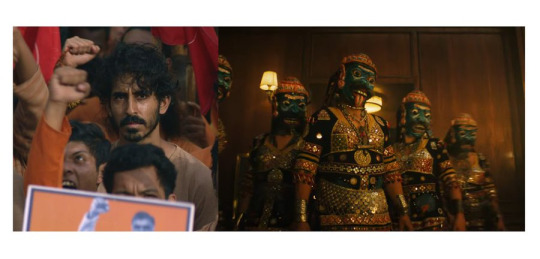
Hijra: They are the transgender, eunuch, or intersex people in India who are officially recognized as the third sex throughout most countries in the Indian subcontinent. The trans community and history in India goes back a long way as being documented and officially recognized - far back as 12th century under the Delhi Sultanate in government records, and further back in our stories in Hinduism. The word itself is a Hindi word that's been roughly translated into English as "eunuch" commonly but it's not exactly accurate.
Hijras have been considered the third sex back in our ancient stories, and by 2014 got official recognition to identify as the third gender (neither male or female) legally. Pakistan, Nepal, Bangladesh, and India have accepted: eunuch, trans, intersex people & granted them the proper identification options on passports and other government official documents.
But let's get into some of the history surrounding the Hijra community (which for the longest time has been nomadic, and a part of India's long, rich, and sometimes, sadly, troubled history of nomadic tribes/people who have suffered a lot over the ages. Hijras and intersex people are mentioned as far back as in the Kama Sutra, as well as in the early writings of Manu Smriti in the 1st century CE (Common Era), specifically said that a third sex can exist if possessing equal male and female seed.
This concept of balancing male/female energies, seed, and halves is seen in two places in South Asian mythos/culture and connected to the Hijra history.
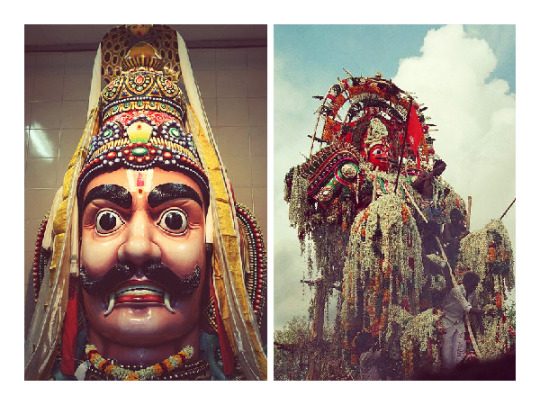
First, we have Aravan/Iravan (romanized) - who is also the patron deity of the transgender community. He is most commonly seen as a minor/village deity and is depicted in the Indian epic Mahabharata. Aravan is portrayed as having a heroic in the story and his self-sacrifice to the goddess Kali earns him a boon.
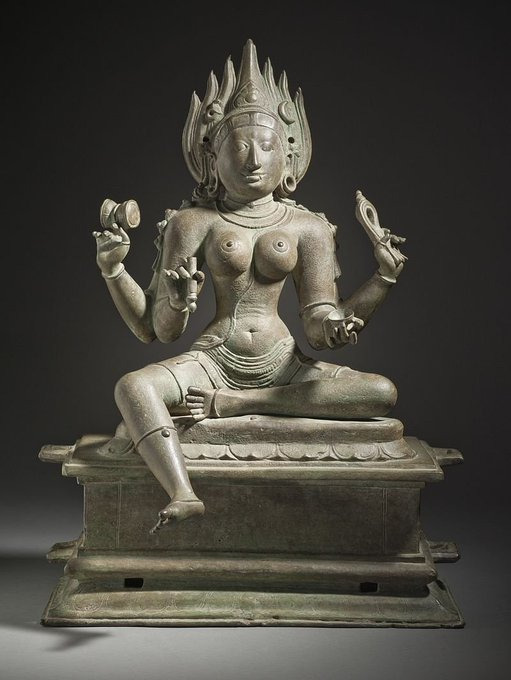
He requests to be married before his death. But because he is doomed to die so shortly after marriage, no one wants to marry him.
No one except Krishna, who adopts his female form Mohini (one of the legendary temptresses in mythology I've written about before) and marries him. It is through this union of male, and male presenting as female in the female form of Mohini that the seed of the Hijras is said to begun, and why the transgender community often worships Aravan and, another name for the community is Aravani - of/from Aravan.
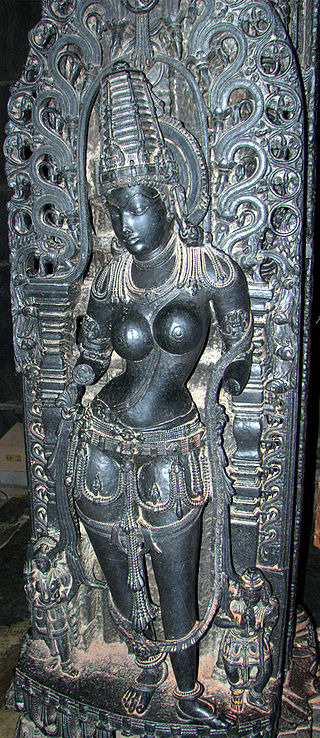
But that's not the only place where a gender non conforming divine representation can be seen. Ardhanarishvara is the half female form of lord Shiva, the destroyer god.
Shiva combines with his consort Parvarti and creates a form that represents the balancing/union between male/female energies and physically as a perfectly split down the middle half-male half-female being. This duality in nature has long been part of South Asian culture, spiritual and philosophical beliefs, and it must be noted the sexuality/gender has often been displayed as fluid in South Asian epics and the stories. It's nothing new.

Many celestial or cosmic level beings have expressed this, and defied modern western limiting beliefs on the ideas of these themes/possibilities/forms of existence.
Ardhanarishvara signifies "totality that lies beyond duality", "bi-unity of male and female in God" and "the bisexuality and therefore the non-duality" of the Supreme Being.
Back to the Hijra community.
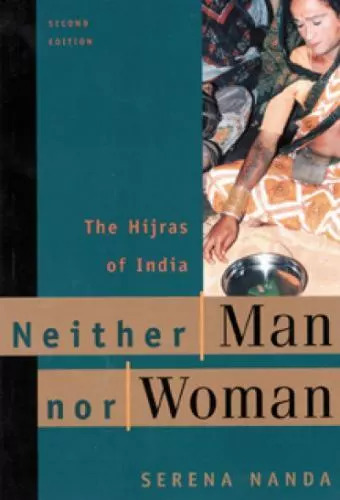
They have a complex and long history. Throughout time, and as commented on in the movie, Monkey Man, the Hijra community has faced ostracization, but also been incorporated into mainstream society there. During the time of the Dehli Sultanate and then later the Mughal Empire, Hijras actually served in the military and as military commanders in some records, they were also servants for wealthy households, manual laborers, political guardians, and it was seen as wise to put women under the protection of Hijras -- they often specifically served as the bodyguards and overseers of harems. A princess might be appointed a Hijra warrior to guard her.
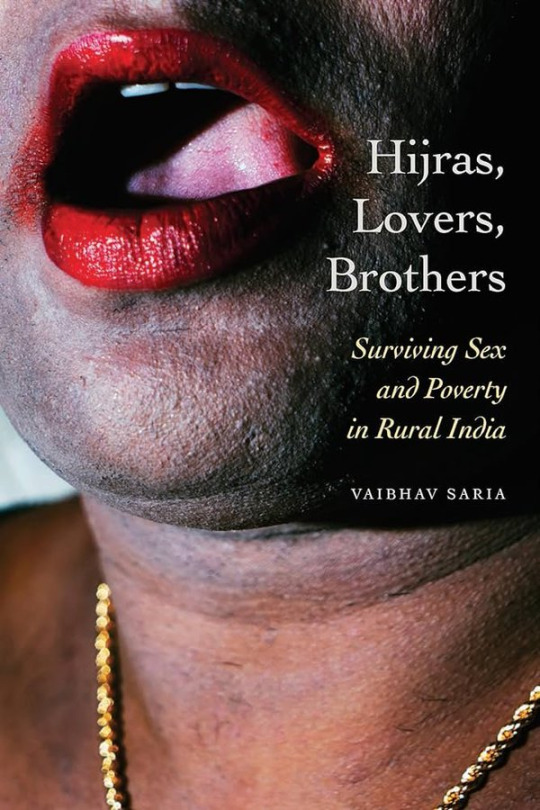
But by the time of British colonialism, anti-Hijra laws began to come in place folded into laws against the many nomadic tribes of India (also shown in part in Monkey Man with Kid (portrayed by Dev Patel) and his family, who are possibly
one of those nomadic tribes that participated in early theater - sadly by caste often treated horribly and relegated to only the performing arts to make money (this is a guess based on the village play they were performing as no other details were given about his family).
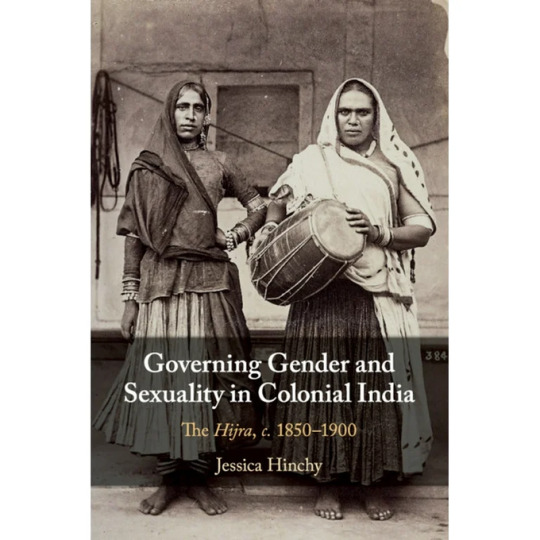
Hijras were criminalized in 1861 by the Indian Penal Code enforced by the British and were labeled specifically as "The Hijra Problem" -- leading to an anti-Hijra campaign across the subcontinent with following laws being enacted: punishing the practices of the Hijra community, and outlawing castration (something many Hijra did to themselves). Though, it should be noted many of the laws were rarely enforced by local Indian officials/officers. But, the British made a point to further the laws against them by later adding the Criminal Tribes Act in 1871, which targeted the Hijra community along with the other nomadic Indian tribes - it subjected them to registration, tracking/monitoring, stripping them of children, and their ability to sequester themselves in their nomadic lifestyle away from the British Colonial Rule.
Today, things have changed and Hijras are being seen once again in a more positive light (though not always and this is something Monkey Man balances by what's happened to the community in a few scenes, and the heroic return/scene with Dev and his warriors). All-hijra communities exist and sort of mirror the western concept of "found families" where they are safe haven/welcoming place trans folks and those identifying as intersex.
These communities also have their own secret language known as Hijra Farsi, which is loosely based on Hindi, but consists of a unique vocabulary of at least 1,000 words.
As noted above, in 2014, the trans community received more legal rights.
Specifically: In April 2014, Justice K. S. Radhakrishnan declared transgender to be the third gender in Indian law in National Legal Services Authority v. Union of India.
Hijras, Eunuchs, apart from binary gender, be treated as "third gender" for the purpose of safeguarding their rights under Part III of our Constitution and the laws made by the Parliament and the State Legislature. Transgender persons' right to decide their self-identified gender is also upheld and the Centre and State Governments are directed to grant legal recognition of their gender identity such as male, female or as third gender.
I've included some screenshots of (some, not all, and certainly not the only/definitive reads) books people can check out about SOME of the history. Not all again. This goes back ages and even our celestial beings/creatures have/do display gender non conforming ways.
There are also films that touch on Hijra history and life. But in regards to Monkey Man, which is what started this thread particularly and being asked to comment - it is a film that positively portrayed India's third sex and normalized it in its depiction. Kid the protagonist encounters a found family of Hijras at one point in the story (no spoilers for plot) and his interactions/acceptance, living with them is just normal. There's no explaining, justifying, anything to/for the audience. It simply is. And, it's a beautiful arc of the story of Kid finding himself in their care/company.
#hijra#trans representation#monkey man#dev patel#transgender#trans rights#trans rights are human rights#third sex#indian history#indian culture#colonialism#imperialism#south Asian mythos#South Asian myths#Aravan#Iravan#Mahabharata#hindu mythology#hindu gods#kali goddess#krishna#hindu mythology art#Ardhanarishvara#Shiva#Parvarti#sexuality#gender fluid#fluid sexuality#trans community#transgender rights
752 notes
·
View notes
Text


Untitled 3 & 4 by Thota Vaikuntam
#Thota Vaikuntam#Indian art#South Asian#South Indian#south asian contemporary art#traditional clothing#traditional fashion#cultural clothing#folk clothing#hinduism#contemporary art#contemporary indian art#modern indian art#indian painting#south indian male#south indian female#indian fashion#sari#saree
28 notes
·
View notes
Text






diariesofnomad : Keeping our rich heritage alive with Naani'ki Vintage Jewels. Campaign "Sarhad" by @divaniindia
Talent - @harneek_singh @Isha._Sharma @thekiratkaur @shiwan_bhardwaj @chetanswarooptirdia @arunnaral @cute_kukasingh @jaya.bhagwanani @adhirbhagwanani AshaSarin Photography -@gourabganguli Creative Direction-@sanyadhir Concept and [email protected] @sonakshijain18 Makeup - @shaan_makeup_artist Rugs-@jaipurrugs
#photography#indian art#indian photography#indian jewelry#indian dress#indian mehndi#indian henna#nostalgia#vintage jewelry#gold jewelry#south asian art#south asian culture#asian art#uploads#desert#traditional dress#photoshoot#fashion photography#memories#bharat#indian culture#gold#mehndi
29 notes
·
View notes
Text
Origins of the Pibo: Let’s take a trip along the Silk Road.
1. Introduction to the garment:
Pibo 披帛 refers to a very thin and long shawl worn by women in ancient East Asia approximately between the 5th to 13th centuries CE. Pibo is a modern name and its historical counterpart was pei 帔. But I’ll use pibo as to not confuse it with Ming dynasty’s xiapei 霞帔 and a much shorter shawl worn in ancient times also called pei.
Below is a ceramic representation of the popular pibo.
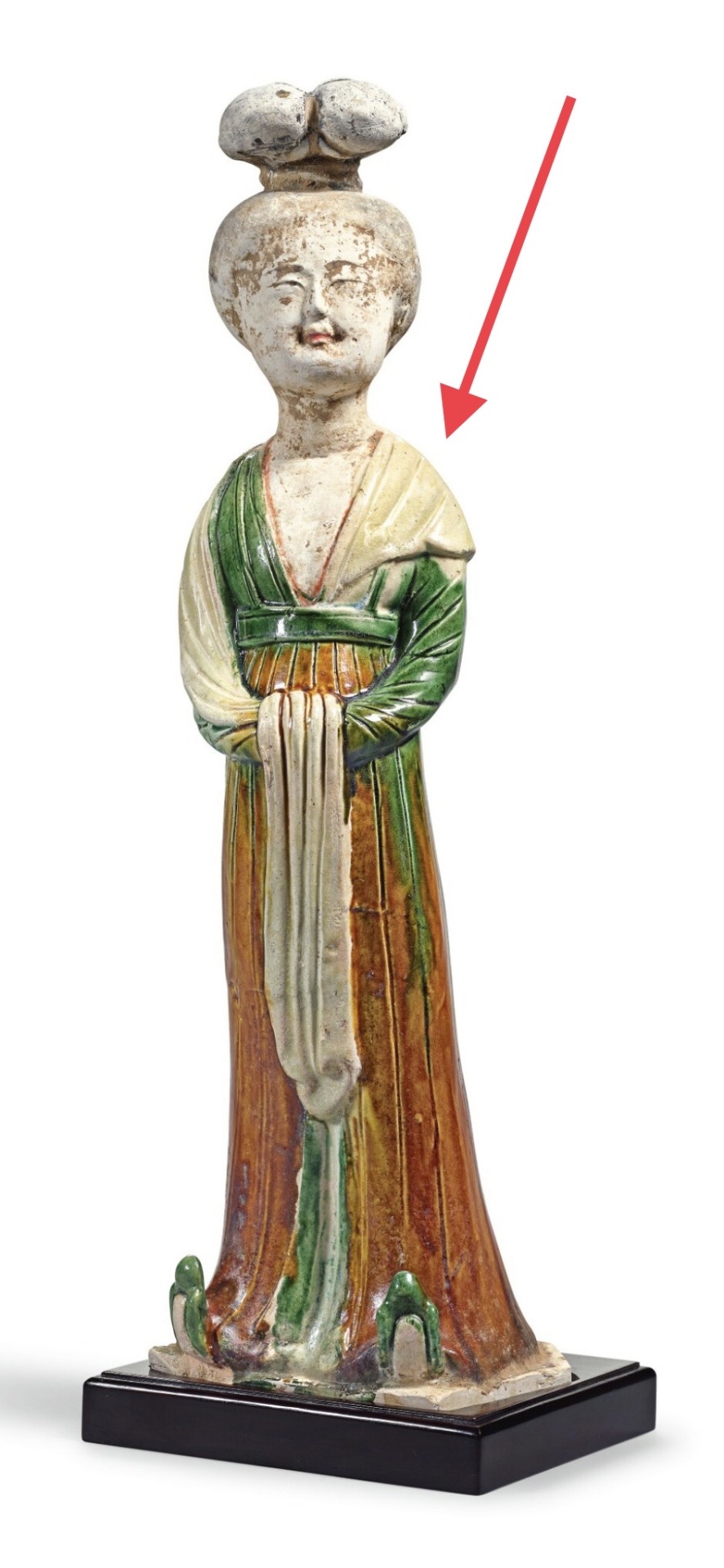
A sancai-glazed figure of a court lady, Tang Dynasty (618–690, 705–907 CE) from the Sze Yuan Tang Collection. Artist unknown. Sotheby’s [image source].
Although some internet sources claim that pibo in China can be traced as far back as the Qin (221-206 BCE) or Han (202 BCE–9 CE; 25–220 CE) dynasties, we don’t start seeing it be depicted as we know it today until the Northern and Southern dynasties period (420-589 CE). This has led to scholars placing pibo’s introduction to East Asia until after Buddhism was introduced in China. Despite the earliest art representations of the long scarf-like shawl coming from the Northern and Southern Dynasties period, the pibo reached its popularity apex in the Tang Dynasty (618–690 CE: 705–907 CE).
Academic consensus: Introduction via the Silk Road.
The definitive academic consensus is that pibo evolved from the dajin 搭巾 (a long and thin scarf) worn by Buddhist icons introduced to China via the Silk Road from West Asia.
披帛是通过丝绸之路传入中国的西亚文化, 与中国服饰发展的内因相结合而流行开来的一种"时世妆" 的形式. 沿丝绸之路所发现的披帛, 反映了丝绸贸易的活跃.
[Trans] Pibo (a long piece of cloth covering the back of the shoulders) was a popular female fashion period accessory introduced to China by West Asian cultures by way of the Silk Road and the development of Chinese costumes. The brocade scarves found along the Silk Road reflect the prosperity of the silk trade that flourished in China's past (Lu & Xu, 2015).
I want to add to the above theory my own speculation that, what the Chinese considered to be dajin, was most likely an ancient Indian garment called uttariya उत्तरीय.
2. Personal conjecture: Uttariya as a tentative origin to pibo.
In India, since Vedic times (1500-500 BCE), we see mentions in records describing women and men wearing a thin scarf-like garment called “uttariya”. It is a precursor of the now famous sari. Although the most famous depiction of uttariya is when it is wrapped around the left arm in a loop, we do have other representations where it is draped over the shoulders and cubital area (reverse of the elbow).
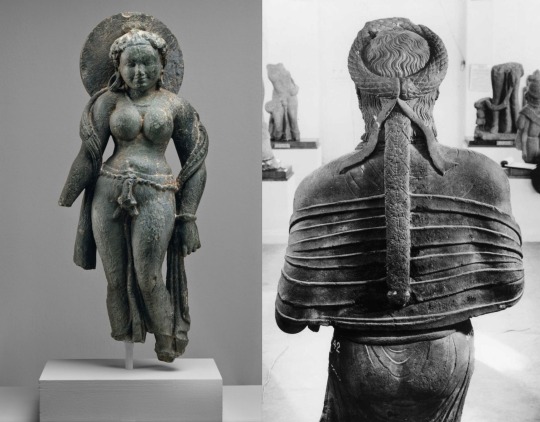
Left: Hindu sculpture “Mother Goddess (Matrika)”, mid 6th century CE, gray schist. Artist unknown. Looted from Rajasthan (Tanesara), India. Photo credit to Metropolitan Museum of Art, New York, United States [image source].
Right: Rear view of female statue possibly representing Kambojika, the Chief Queen of Mahakshatrapa Rajula, ca. 1st century CE. Artist unknown. Found in the Saptarishi Mound, Mathura, India. Government Museum, Mathura [image source].
Buddhism takes many elements from Hindu mythology, including apsaras अप्सरा (water nymphs) and gandharvas गन्धर्व (celestial musicians). The former was translated as feitian 飞天 in China. Hindu deities were depicted wearing clothes similar to what Indian people wore, among which we find uttariya, often portrayed in carvings and sculptures of flying and dancing apsaras or gods to show dynamic movement. Nevertheless, uttariya long predated Buddhism and Hinduism.
Below are carved representation of Indian apsaras and gandharvas. Notice how the uttariya are used.
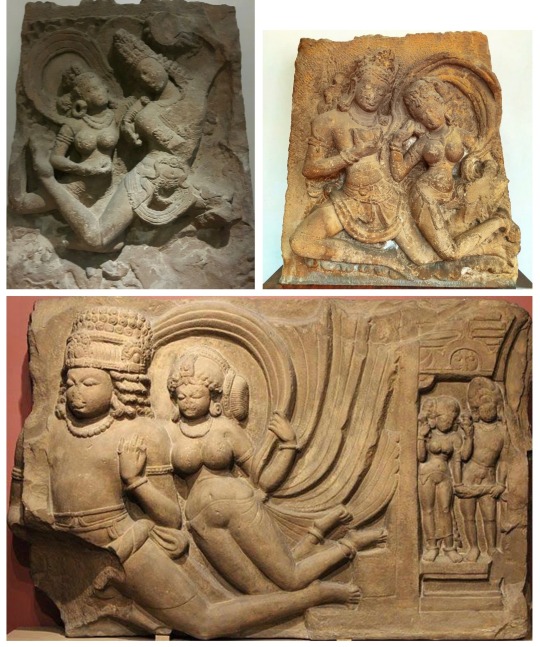
Upper left: Carved relief of flying celestials (Apsara and Gandharva) in the Chalukyan style, 7th century CE, Chalukyan Dynasty (543-753 CE). Artist Unknown. Aihole, Karnataka, India. National Museum, New Delhi, India [image source]. The Chalukyan art style was very influential in early Chinese Buddhist art.
Upper right: Carved relief of flying celestials (gandharvas) from the 10th to the 12th centuries CE. Artist unknown. Karnataka, India. National Museum, New Delhi, India [image source].
Bottom: A Viyadhara (wisdom-holder; demi-god) couple, ca. 525 CE. Artist unknown. Photo taken by Nomu420 on May 10, 2014. Sondani, Mandsaur, India [image source].
Below are some of the earliest representations of flying apsaras found in the Mogao Caves, Gansu Province, China. An important pilgrimage site along the Silk Road where East and West met.
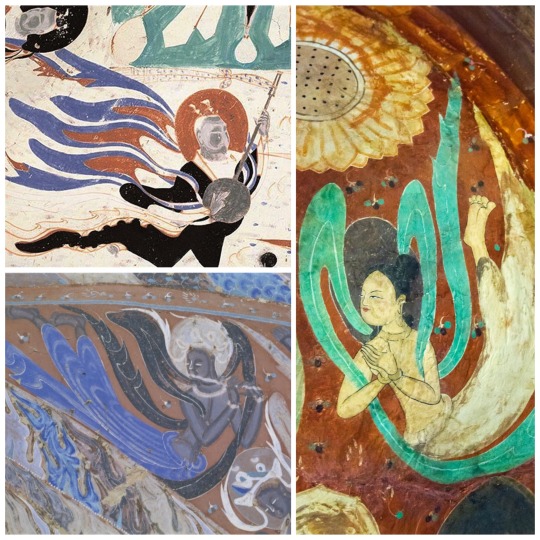
Left to right: Cave No. 461, detail of mural in the roof of the cave depicting either a flying apsara or a celestial musician. Western Wei dynasty (535–556 CE). Artist unknown. Mogao Grottoes, Dunhuang, China [image source].
Cave 285 flying apsara (feitian) in one of the Mogao Caves. Western Wei Dynasty (535–556 CE), Artist unknown. Photo taken by Keren Su for Getty Images. Mogao Grottoes, Dunhuang, China [image source].
Cave 249. Mural painting of feitian playing a flute, Western Wei Dynasty (535-556 CE). Image courtesy by Wang Kefen from The Complete Collection of Dunhuang Grottoes, Vol. 17, Paintings of Dance, The Commercial Press, Hong Kong, 2001, p. 15. Mogao Grottoes, Dunhuang, China [image source].
I theorize that it is likely that the pibo was introduced to China via Buddhism and Buddhist iconography that depicted apsaras (feitian) and other deites wearing uttariya and translated it to dajin.
3. Trickle down fashion: Buddhism’s journey to the East.
However, since Buddhism and its Indian-based fashion spread to West Asia first, to Sassanian Persians and Sogdians, it is likely that, by the time it reached the Han Chinese in the first century CE, it came with Persian and Sogdian influence. Persians’ fashion during the Sassanian Empire (224–651 CE) was influenced by Greeks (hellenization) who also had a a thin long scarf-like garment called an epliblema ἐπίβλημα, often depicted in amphora (vases) of Greek theater scenes and sculptures of deities.
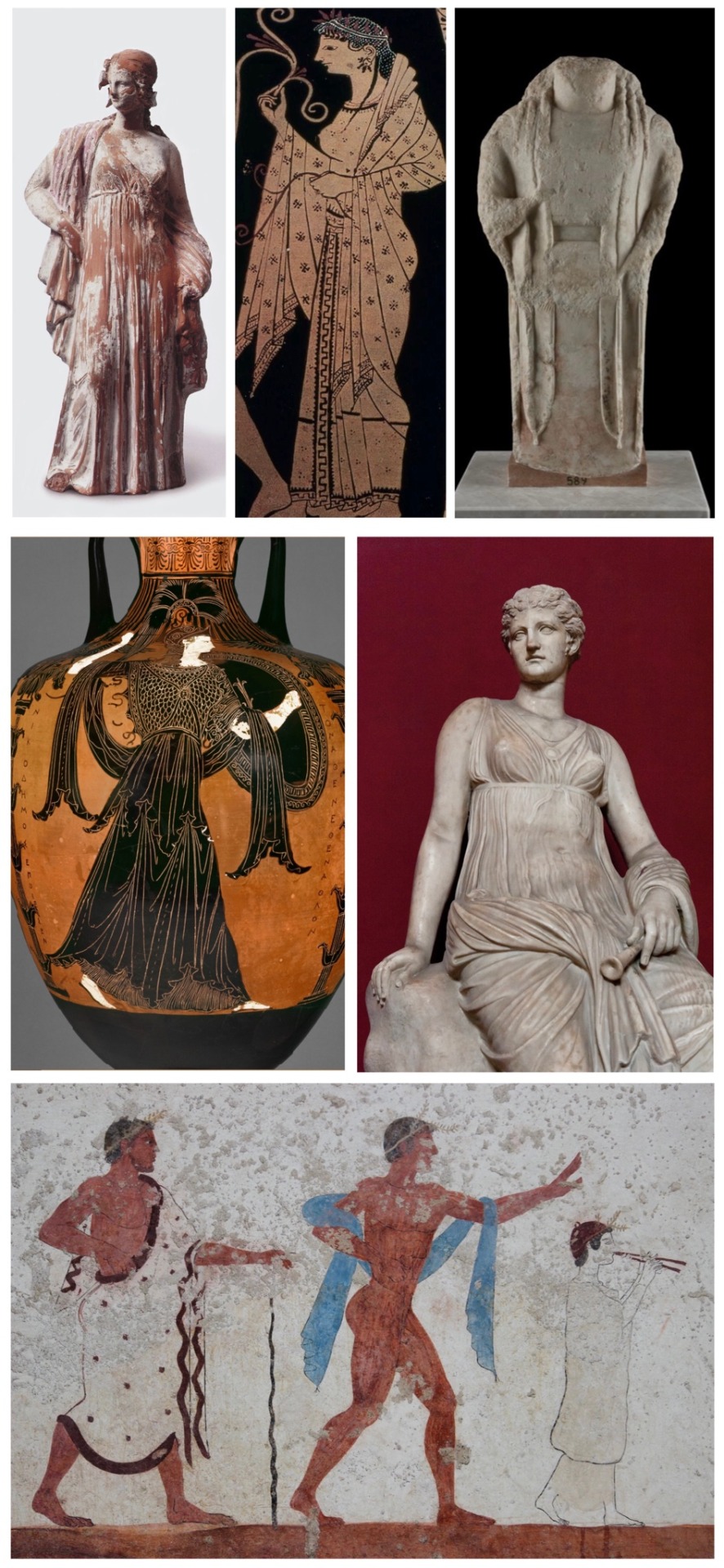
Left to right: Dame Baillehache from Attica, Greece. 3rd century BCE, Hellenistic period (323-30 BCE), terracotta statuette. Photo taken by Hervé Lewandowski. Louvre Museum, Paris, France [image source].
Deatail view of amphora depicting the goddess Artemis by Athenian vase painter, Andokides, ca. 525 BCE, terracotta. Found in Vulci, Italy. Altes Museum, Berlin, Germany [image source].
Statue of a Kore (young girl), ca. 570 BCE, Archaic Period (700-480 BCE), marble. Artist unknown. Uncovered from Attica, Greece. Acropolis Museum, Athens, Greece [image source].
Detail view of Panathenaic (Olympic Games) prize amphora with lid, 363–362 BCE, Attributed to the Painter of the Wedding Procession and signed by Nikodemos, terracotta. Uncovered from Athens, Greece. J. Paul Getty Museum, Los Angeles, California, United States [image source].
Roman statue depicting Euterpe, muse of lyric poetry and music, ca. 2nd century CE, marble, Artist unknown. From the Villa of G. Cassius Longinus near Tivoli, Italy. Photo taken by Egisto Sani on March 12, 2012, Vatican Museums, Rome, Italy [image source].
Greek (or Italic) tomb mural painting from the Tomb of the Diver, ca. 470 BCE, fresco. Artist unknown. Photo taken by Floriano Rescigno. Necropolis of Paestum, Italy [image source].
Below are Iranian and Iraqi period representations of this long thin scarf.

Left to right: Closeup of ewer likely depicting a female dancer from the Sasanian Period (224–651 CE) in ancient Persia , Iran, 6th-7th century CE, silver and gilt. Artist unknown. Mary Harrsch. July 10, 2015. Arthur M. Sackler Gallery of Asian Art, Smithsonian, Washington D.C [image source].
Ewer with nude dancer probably representing a maenad, companion of Dionysus from the Sasanian Period (224–651 CE) in ancient Persia, Iran, 6th-7th century CE, silver and gilt. Artist unknown. Mary Harrsch. July 16, 2015. Arthur M. Sackler Gallery of Asian Art, Smithsonian, Washington D.C [image source].
Painting reconstructing the image of unveiled female dancers depicted in a fresco, Early Abbasid period (750-1258 CE), about 836-839 CE from Jawsaq al-Khaqani, Samarra, Iraq. Museum of Turkish and Islamic Art, Istanbul [image source].
The earliest depictions of Buddha in China, were very similar to West Asian depictions. Ever wonder why Buddha wears a long draped robe similar to a Greek himation (Romans called it toga)?
Take a look below at how much the Greeks influenced the Kushans in their art and fashion. The top left image is one of the earliest depictions of Buddha in China. Note the similarities between it and the Gandhara Buddha on the right.
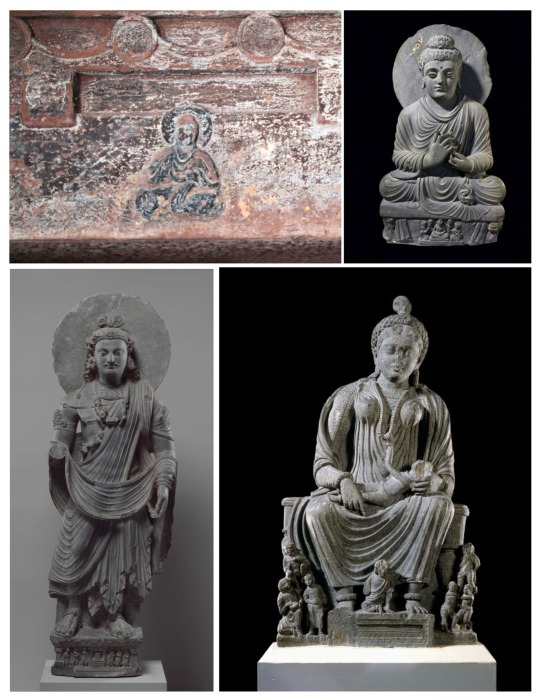
Left: Seated Buddha, Mahao Cliff Tomb, Sichuan Province, Eastern Han Dynasty, late 2nd century C.E. (photo: Gary Todd, CC0).
Right: Seated Buddha from Gandhara, Pakistan c. 2nd–3rd century C.E., Gandhara, schist (© Trustees of the British Museum)
Standing Bodhisattva Maitreya (Buddha of the Future), ca. 3rd century, gray schist. From Gandhara, Pakistan. Image credit to The Metropolitan Museum of Art, New York City, United States [image source].
Statue of seated goddess Hariti with children, ca. 2nd to 3rd centuries CE, schist. Artist unknown. From Gandhara, Pakistan. The British Museum, London, England [image source].
Before Buddhism spread outside of Northern India (birthplace), Indians never portrayed Buddha in human form.
Early Buddhist art is aniconic, meaning the Buddha is not represented in human form. Instead, Buddha is represented using symbols, such as the Bodhi tree (where he attained enlightenment), a wheel (symbolic of Dharma or the Wheel of Law), and a parasol (symbolic of the Buddha’s royal background), just to name a few. […] One of the earliest images [of Buddha in China] is a carving of a seated Buddha wearing a Gandharan-style robe discovered in a tomb dated to the late 2nd century C.E. (Eastern Han) in Sichuan province. Ancient Gandhara (located in present-day Afghanistan, Pakistan, and northwest India) was a major center for the production of Buddhist sculpture under Kushan patronage. The Kushans occupied portions of present-day Afghanistan, Pakistan, and North India from the 1st through the 3rd centuries and were the first to depict the Buddha in human form. Gandharan sculpture combined local Greco-Roman styles with Indian and steppe influences (Chaffin, 2022).
In the Mogao Caves, which contain some of the earliest Buddhist mural paintings in China, we see how initial Chinese Buddhist art depicted Indian fashion as opposed to the later hanfu-inspired garments.
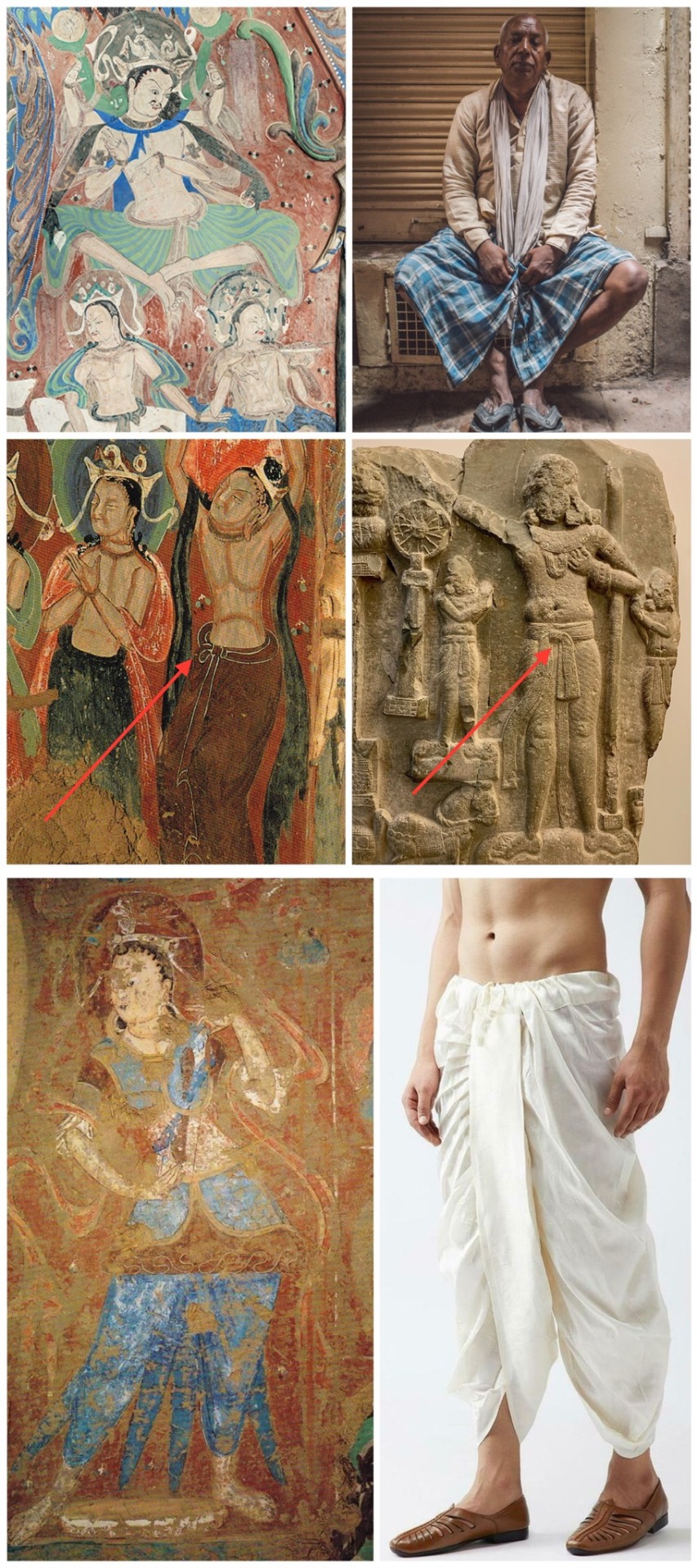
Left to right: Cave 285, detail of wall painting, Western Wei dynasty (535–556 CE). Mogao Grottoes, Dunhuang, China. Courtesy the Dunhuang Academy [image source]. Note the clothes the man is wearing. It looks very similar to a lungi (a long men’s skirt).
Photo of Indian man sitting next to closed store wearing shirt, scarf, lungi and slippers. Paul Prescott. February 20, 2015. Varanasi, India [image source].
Cave 285, mural depiction of worshipping bodhisattvas, 6th century CE, Wei Dynasty (535-556 A.D.), Unknown artist. Mogao Grottoes, Dunhuang, China. Notice the half bow on his hips. That is a common style of tying patka (also known as pataka; cloth sashes) that we see throughout Indian history. Many of early Chinese Buddhist paintings feature it, including the ones at Mogao Caves.
Indian relief of Ashoka wearing dhoti and patka, ca. 1st century BC, Unknown artist. From the Amaravathi village, Guntur district, Andhra Pradesh, India. Currently at the Guimet Museum, Paris [image source].
Cave 263. Mural showing underlying painting, Northern Wei Dynasty (386–535 CE). Artist Unknown. Picture taken November 29, 2011, Mogao Grottoes, Dunhuang, China [image source]. Note the pants that look to be dhoti.
Comparison photo of modern dhoti advertisement from Etsy [image source].
Spread of Buddhism to East Asia.

Map depicting the spread of Buddhism from Northern India to the rest of Asia. Gunawan Kartapranata. January 31, 2014 [image source]. Note how Mahayana Buddhism arrived to China after passing through Kushan, Bactrean, and nomadic steppe lands, absorbing elements of each culture along the way.
Wealthy Buddhist female patrons emulated the fantasy fashion worn by apsaras, specifically, the uttariya/dajin and adopted it as an everyday component of their fashion.
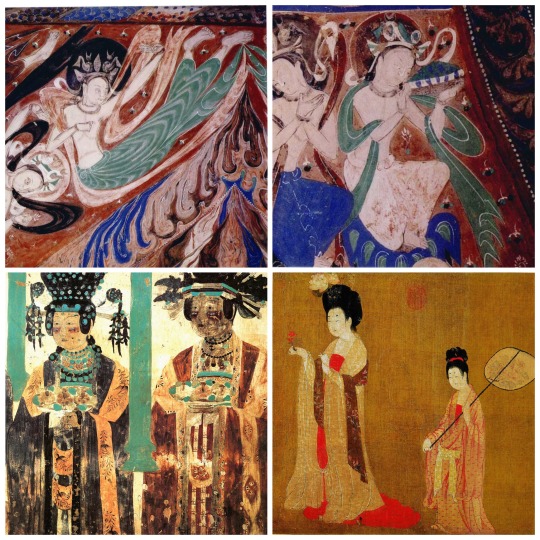
Cave 285. feitian mural painting on the west wall, Western Wei Dynasty (535–556 CE). Artist unknown. Mogao Grottoes, Dunhuang, China [image source].
Cave 285. Detail view of offering bodhisattvas (bodhisattvas making offers to Buddha) next to the phoenix chariot on the Western wall of the cave. Western Wei Dynasty (535–556 CE). Artist unknown. Mogao Grottoes, Dunhuang, China [image source].
Cave 61 Khotanese (from the kingdom of Khotan 于阗 [56–1006 CE]) donor ladies, ca. 10th century CE, Five Dynasties period (907 to 979 CE). Artist unknown. Picture scanned from Zhang Weiwen’s Les oeuvres remarquables de l'art de Dunhuang, 2007, p. 128. Uploaded to Wikimedia Commons on October 11, 2012 by Ismoon. Mogao Grottoes, Dunhuang, China [image source].
Detail view of Ladies Adorning Their Hair with Flowers 簪花仕女图, late 8th to early 9th century CE, handscroll, ink and color on silk, Zhou Fang 周昉 (730-800 AD). Liaoning Provincial Museum, Shenyang, China [image source].
Therefore, the theory I propose of how the pibo entered East Asia is:
India —> Greek influenced West Asia (Sassanian Persians, Sogdians, Kushans, etc…) —> Han China —> Rest of East Asia (Three Kingdoms Korea, Asuka Japan, etc…)
Thus, the most likely theory, in my person opinion, is Buddhist iconography depicting uttariya encountered Greek-influenced West Asian Persian, Sogdian, and Kushan shawls, which combined arrived to China but wouldn’t become commonplace there until the explosion in popularity of Buddhism from the periods of Northern and Southern Dynasties to Song.
References:
盧秀文; 徐會貞. 《披帛與絲路文化交流》 [The brocade scarf and the cultural exchanges along the Silk Road]. 敦煌研究 (中國: 敦煌研究編輯部). 2015-06: 22 – 29. ISSN 1000-4106.
#hanfu#chinese culture#chinese history#buddhism#persian#sogdian#kushan#gandhara#indian fashion#uttariya#pibo#history#asian culture#asian art#asian history#asian fashion#east asia#south asia#india#pakistan#iraq#afghanistan#sassanian#silk road#fashion history#tang dynasty#eastern han dynasty#cultural exchange#greek fashion#mogao caves
298 notes
·
View notes
Text

Happy Independence Day to the country of India, also known as Bharat. This art by "YC" shows scenes from one of India's classic tales the Ramayana. I like the Ramayana story and many other classic tales from India, and I enjoy seeing how new generations of artists re interpret these stories through art, literature, dance, music, and more.
Link to source :
#india#bharat#indian mythology#south asian#independence day#india independence day#ramayana#hinduism#art#mythology#colourful#sita#rama#hanuman#indian culture
9 notes
·
View notes
Text







Exhibition - Pop South Asia
At the KNMA museum
#indian dark academia#desi academia#desi aesthetic#indian aesthetic#desi tumblr#art aesthetic#urdu aesthetic#desi moodboard#escapism#hindu mythology#hindugods#south asia#south asian#indian culture#india#museums#museum#dark academia blog#girl blog#lifestyle blog#blog#chaotic aesthetic#dark acadamia aesthetic#academia aesthetic#aesthetic#pop art
7 notes
·
View notes
Text

A Cozy Day In 🏡💕
Another fun illustration of Mahya & Aayash enjoying each others company ❤️ (Featuring their cat, Mimi 😸)
Hope you enjoy! ~Smarty
#digital art#artists on tumblr#procreate#small artist#artist support#artist#ipad#ipad art#cute#south asian art#south asian artists#couple#couple goals#cat#cozy#indian#desi culture#desi girl#desi things#desi stuff#desi#original character#oc artwork#my ocs#oc#anime#oc artist#my art#drawing
2 notes
·
View notes
Text
Foreigners Everywhere - Gratitude
Everyone here is a foreigner to each other and yet the bonding is magical and that's probably makes us more humane!
Indian culture instills respect and gratitude for the five elements (Space, Air, Fire, Water and Earth), the Sun and the Moon, as the life sustaining forces in nature. Numerous people revere these elements in different ways. This value also instills in a person the appreciation of things and beings for who they are and without the desire to acquire or own them! Fun fact: Just before I started…

View On WordPress
#Bryce canyaon painting#contemporary art#contemporaryart#foreigners everywhere#Gratitude#Indian artist#Indian Culture#Indian woman#Originalart#Respect#South asian artist#Stranieri ovunque#Utah
0 notes
Text

900 Artifacts From Ming Dynasty Shipwrecks Found in South China Sea
The trove of objects—including pottery, porcelain, shells and coins—was found roughly a mile below the surface.
Underwater archaeologists in China have recovered more than 900 artifacts from two merchant vessels that sank to the bottom of the South China Sea during the Ming dynasty.
The ships are located roughly a mile below the surface some 93 miles southeast of the island of Hainan, reports the South China Morning Post’s Kamun Lai. They are situated about 14 miles apart from one another.


During three phases over the past year, researchers hauled up 890 objects from the first vessel, including copper coins, pottery and porcelain, according to a statement from China’s National Cultural Heritage Administration (NCHA). That’s just a small fraction of the more than 10,000 items found at the site. Archaeologists suspect the vessel was transporting porcelain from Jingdezhen, China, when it sank.
The team recovered 38 items from the second ship, including shells, deer antlers, porcelain, pottery and ebony logs that likely originated from somewhere in the Indian Ocean.
Archaeologists think the ships operated during different parts of the Ming dynasty, which lasted from 1368 to 1644.

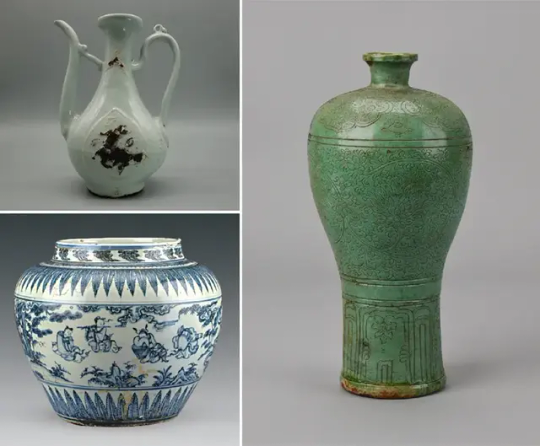
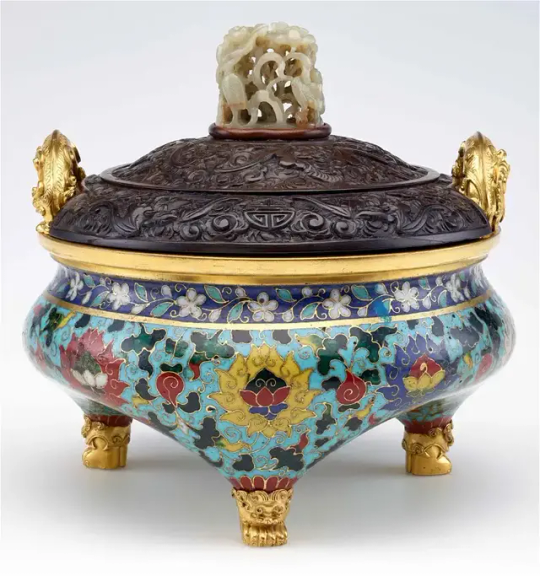
Many of the artifacts came from the Zhengde period of the Ming dynasty, which spanned 1505 to 1521. But others may be older, dating back to the time of Emperor Hongzhi, who reigned from 1487 to 1505, as Chris Oberholtz reported last year.
Archaeologists used manned and unmanned submersibles to collect the artifacts and gather sediment samples from the sea floor. They also documented the wreck sites with high-definition underwater cameras and a 3D laser scanner.
The project was a collaboration between the National Center for Archaeology, the Chinese Academy of Science and a museum in Hainan.
“The discovery provides evidence that Chinese ancestors developed, utilized and traveled to and from the South China Sea, with the two shipwrecks serving as important witnesses to trade and cultural exchanges along the ancient Maritime Silk Road,” says Guan Qiang, deputy head of the NCHA, in the agency’s statement.


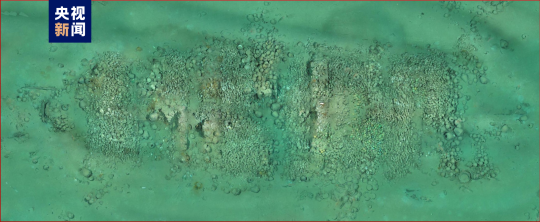
During the Ming dynasty, China’s population doubled, and the country formed vital cultural ties with the West. Ming porcelain, with its classic blue and white color scheme, became an especially popular export. China also exported silk and imported new foods, including peanuts and sweet potatoes.
The period had its own distinctive artistic aesthetic. As the Smithsonian’s National Museum of Asian Art writes, “Palace painters excelled in religious themes, moralizing narrative subjects, auspicious bird-and-flower motifs and large-scale landscape compositions.”
The shipwreck treasures aren’t the only recent discoveries in the South China Sea, according to CBS News’ Stephen Smith. Just last month, officials announced the discovery of a World War II-era American Navy submarine off the Philippine island of Luzon.
By Sarah Kuta.




#900 Artifacts From Ming Dynasty Shipwrecks Found in South China Sea#island of Hainan#Ming dynasty#shipwreck#ancient artifacts#archeology#archeolgst#history#history news#ancient history#ancient culture#ancient civilizations#ancient china#chinese history#chinese art#ancient art
912 notes
·
View notes
Text
For anyone wanting something nifty and free, this is a comic I made with the lovely Sachi Ediriweera -- Gang Violence (inspired by Bollywood tropes & tales about a good cop come to town with a supernatural twist.


Whole comic is free!
#comics#comic books#free books#free comics#Bollywood#police officer#supernatural#supernatural twist#Sri Lanka#Sri Lankan author#indian authors#Sachi Ediriweera#cop drama#south asian#south asian culture#support real writers#support real artists#artists#art support#books and comics#graphic novel#art and writing
0 notes
Text
South Asian and Hindu Influences in ATLA (Part 2)
disclaimer: i was raised culturally and religiously hindu, and though i've tried to do my research for this post and pair it with my own cultural knowledge, i'm not an expert on hinduism by any means. should i mess up, please let me know.
please also be aware that many of the concepts discussed in this post overlap heavily with religions such as buddhism and jainism, which might have different interpretations and representations. as i'm not from those religions or cultures, i don't want to speak on them, but if anyone with that knowledge wishes to add on, please feel free.
Part 1
In the previous post, I discussed some of the things ATLA got right in its depictions of desi and hindu cultures. unfortunately, they also got plenty of things wrong - often in ways that leaned towards racist caricatures - so let's break them down, starting with...
Guru Pathik
both the word "guru" and name "pathik" come from sanskrit. pathik means "traveler" or "he who knows the way" while guru is a term for a guide or mentor, similar to a teacher.
gurus were responsible for the very first education systems in ancient india, setting up institutions called gurukuls. students, referred to as disciples, would often spend years living with and learning from their gurus in these gurukuls, studying vedic and buddhist texts, philosophy, music and even martial arts.
however, their learning was not limited merely to academic study, as gurus were also responsible for guiding the spiritual evolution of their disciples. it was common for disciples to meditate, practice yoga, fast for days or weeks, and complete mundane household chores every day in order to instill them with self-discipline and help them achieve enlightenment and spiritual awareness. the relationship between a guru and his disciple was considered a sacred, holy bond, far exceeding that of a mere teacher and student.
aang's training with guru pathik mirrors some of these elements. similar to real gurus, pathik takes on the role of aang's spiritual mentor. he guides aang in unblocking his chakras and mastering the avatar state through meditation, fasting, and self-reflection - all of which are practices that would have likely been encouraged in disciples by their gurus.
pathik's design also takes inspiration from sadhus, holy men who renounced their worldly ties to follow a path of spiritual discipline. the guru's simple, nondescript clothing and hair are reflective of the ascetic lifestyle sadhus are expected to lead, giving up material belongings and desires in order to achieve spiritual enlightenment and, ultimately, liberation from the reincarnation cycle.
unfortunately, this is where the respectful references end because everything else about guru pathik was insensitive at best and stereotypical at worst.
it is extremely distasteful that the guru speaks with an overexaggerated indian accent, even though the iranian-indian actor who plays him has a naturally british accent. why not just hire an actual indian voice actor if the intention was to make pathik sound authentic? besides, i doubt authenticity was the sole intention, given that the purposeful distortion of indian accents was a common racist trope played for comedy in early 2000s children's media (see: phineas and ferb, diary of a wimpy kid, jessie... the list goes on).
furthermore, while pathik is presented a wise and respected figure within this episode, his next (and last) appearance in the show is entirely the opposite.
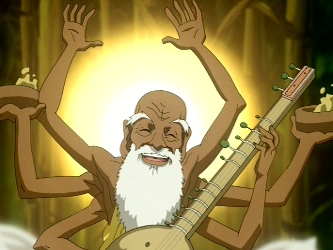
in the episode nightmares and daydreams, pathik appears in aang's nightmare with six hands, holding what appears to be a veena (a classical indian music instrument). this references the iconography of the hindu deity Saraswati, the goddess of wisdom and knowledge. the embodiment of divine enlightenment, learning, insight and truth, Saraswati is a member of the Tridevi (the female version of the Trimurti), one of the most respected and revered goddesses in the Hindu pantheon... and her likeness is used for a cheap laugh on a character who's already treated as a caricature.
that's bad enough on its own, but when you consider that guru pathik is the only explicitly south asian coded character in the entire show, it's downright insulting. for a show that took so many of its foundational concepts from south asia and hinduism and yet provided almost no desi representation in return, this is just rubbing salt in the wound.
Chakras
"chakra", meaning "circle" or "wheel of life" in sanskrit, refers to sources of energy found in the human body. chakra points are aligned along the spine, with energy flowing from the lowest to the highest point. the energy pooled at the lowest chakra is called kundalini, and the aim is to release this energy to the highest chakra in order to achieve spiritual enlightenment and consciousness.
the number of chakras varies in different religions, with buddhism referencing five chakras while hinduism has seven. atla draws from the latter influence, so let's take a look at the seven chakras:
Muladhara (the Root Chakra). located at the base of the spine, this chakra deals with our basest instincts and is linked to the element of earth.
Swadhisthana (the Sacral Chakra). located just below the navel, this chakra deals with emotional intensity and pleasure and is linked to the element of water.
Manipura (the Solar Plexus Chakra). located in the stomach, this chakra deals with willpower and self-acceptance and is linked to the element of fire.
Anahata (the Heart Chakra). located in the heart, this chakra deals with love, compassion and forgiveness and is linked to the element of air. in the show, this chakra is blocked by aang's grief over the loss of the air nomads, which is a nice elemental allusion.
Vishudda (the Throat Chakra). located at the base of the throat, this chakra deals with communication and honesty and is linked to the fifth classical element of space. the show calls this the Sound Chakra, though i'm unsure where they got that from.
Ajna (the Third Eye Chakra). located in the centre of the forehead, this chakra deals with spirituality and insight and is also linked to the element of space. the show calls it the Light Chakra, which is fairly close.
Sahasrara (the Crown Chakra). located at the very top of the head, this chakra deals with pure cosmic consciousness and is also linked to the element of space. it makes perfect sense that this would be the final chakra aang has to unblock in order to connect with the avatar spirit, since the crown chakra is meant to be the point of communion with one's deepest, truest self.
the show follows these associations and descriptions almost verbatim, and does a good job linking the individual chakras to their associated struggles in aang's arc.
Cosmic Energy
the idea of chakras is associated with the concept of shakti, which refers to the life-giving energy that flows throughout the universe and within every individual.
the idea of shakti is a fundamentally unifying one, stating that all living beings are connected to one another and the universe through the cosmic energy that flows through us all. this philosophy is referenced both in the swamp episode and in guru pathik telling aang that the greatest illusion in the world is that of separation - after all, how can there be any real separation when every life is sustained by the same force?
this is also why aang needing to let go of katara did not, as he mistakenly assumed, mean he had to stop loving her. rather, the point of shedding earthly attachment is to allow one to become more attuned to shakti, both within oneself and others. ironically, in letting go of katara and allowing himself to commune with the divine energy of the universe instead, aang would have been more connected to her - not less.
The Avatar State
according to hinduism, there are five classical elements known as pancha bhuta that form the foundations of all creation: air, water, earth, fire, and space/atmosphere.
obviously, atla borrows this concept in making a world entirely based on the four classical elements. but looking at how the avatar spirit is portrayed as a giant version of aang suspended in mid-air, far above the earth, it's possible that this could reference the fifth liminal element of space as well.
admittedly this might be a bit of a reach, but personally i find it a neat piece of worldbuilding that could further explain the power of the avatar. compared to anyone else who might be able to master only one element, mastering all five means having control of every building block of the world. this would allow the avatar to be far more attuned to the spiritual energy within the universe - and themselves - as a result, setting in motion the endless cycle of death and rebirth that would connect their soul even across lifetimes.
#atla#atla cultural influences#hinduism in atla#welp i thought this would be the last part but i ended up having more to talk about than i thought#so i'll save the book 3 inspirations for the next post#including my absolute favourite combustion man#and by favourite i mean kill it with fire why did you ever think this was okay to do writers
505 notes
·
View notes
Text
also! a very good desi gl movie that hit the bollywood mainstream that i would reeeeally rec is ek ladki ko dekha toh aisa laga (2019) available on netflix!
The Absence of India in Discussions on Queer Asian Media
So, yesterday @lurkingshan tagged me in an ask she got from @impala124 about the absence of India when we're talking about queer Asian media. I was intially just going to reblog it with my thought, but as it kept growing I figured it'd be best to just make my own post. Please read the ask linked above first so this makes sense.
*cracks knuckles* this is going to be the most fun I've had writing a post in ages. (For a little background, I'm a queer Indian, born and raised)
So, this is a very interesting question on a subject I've been rotating in my head for the past several months. There's a lot of different variables that contribute to the noticeable lack of discussion on Indian and South Asian queer media in general, so I'm just going to talk through the ones I've noticed a little randomly.
Talking about Asian media in general, it's well known that the mass popularity of kpop and anime has contributed massively to the increase in popularity of Asian media. If you've been in the Asian media fandom for any amount of time at all, you'll have noticed that media from Korea, Japan, and China gets by far the most attention from international audiences; all East Asian countries. There may be several reasons for this, but in particular, it's no secret that the fetishization of East Asians is a massive proponent in the popularity of media from these countries, while there's no such interest in South Asians. If we shift our focus to queer media specifically, media from these three countries is still extremely popular, with the addition of Thailand and the Philippines to some extent; both South East Asian countries. From what I've seen, there's very little international interest in media from South Asian countries (although, if we're talking about India specifically, I can't exactly say anything. Bollywood has not been good lately). If we talk about queer South Asian media, the scope of interest falls even further. If you'll notice, MyDramaList, one of the most commonly used websites for finding and tracking Asian shows only allows for East and South-East Asian shows. So, that's one reason—there's just not much international interest in Indian media in general. As Shan said in the initial post, it's partially because of a difference in priorities. Korea is notorious for using media to gain global standing, the role of the 'soft power' of Thai bls in the recent bills for equal marriage in Thailand has been widely discussed, the list goes on. Could racism also play a part in the massive gulf of interest in media from East Asian versus South Asian countries? Probably. But I'm not going to get into that too much.
Moving on, there's obviously a massive lack of queer media in India. I think this is greatly exacerbated by the fact that it's very hard to support the people making queer media beyond buying and/or streaming their work. The majority of people engaging with Indian queer media are queer Indians, and a lot of us have to do so in secret because of the society we live in. This means that creators that have to push through several obstacles to publish their work often receive little incentive to continue doing so because of the lack of engagement. Because of the lack of media, international fans are less likely to become interested in queer Indian media, and the cycle continues.
I will say though, contrary to what Shan said, I think Indian media, particularly anything that came out post 2019 might actually be on the easier end of the spectrum when it comes to access. This may simply be bias, so forgive me if I'm wrong here, but from what I've seen, a lot of queer Indian shows are in fact available on streaming sites, and at most you'd need a vpn to access them. I think the two main things that actually hold back queer Indian media from becoming more popular are a lack of noise and it's relatively lower quality.
The main way we find out about new shows in this space is through either word of mouth (well actually, post) or because we follow production houses known for producing media. Because of the sparse nature of both the media and the consumers, there's very few people who learn enough about the media to want to give it a shot. For example, there's a film on netflix called Badhaai Do (hindi for Congratulate Us) that I've been meaning to watch for a while. It centers around a lavender marriage and I've heard a lot of good things about it, so I was slightly surprised to see that most of the people on tumblr I interact with who have been engaging with queer media for far longer than me had never heard of it. There's also a, Indian BL from 2017 called Romil and Jugal that I've written about before here, and I would've never learned of it's existence if not for a friend hearing about it from another friend of hers.
Because there's so little queer indian media, it's natural that the quality leaves much to be desired. The main issue is, because the queer asian media market has become so saturated lately people are becoming a lot more selective with what they watch, and for good reason. This means that queer media from india is simply unable to grow and improve over time, leaving it stagnant. Back in 2016-2018, the overall dearth of queer media from Asia meant that a lot of people were willing to watch shows that were average or even worse. Thailand particularly seems to have benefitted from this, being able to grow and evolve its queer media due to the successes of shows like SOTUS, 2gehter, TharnType and more even recently, KinnPorsche. Queer Indian media will have a much, much harder time with this because of all of the factors I've talked about and more, meaning that it is much harder for queer media to evolve. Honestly, though I haven't been able to watch/read much queer media from India, the stuff I have seen is really quite decent, it's just that it tends to fail in comparison to some of the brilliant stuff we're seeing from other countries. A while a ago, I bought four queer books by Indian authors, and of the three I've read so far, I'd genuinely recommend two, albeit one with quite a few reservations (I'll be writing about them sometime in the future, just haven't found the time yet). While talking about this with @neuroticbookworm, she brought up the excellent point of how Indian media in general has just been of fairly poor quality lately. It seems to me that a lot of it is catered to more conservative audiences, which results in people like me becoming disillusioned with Indian media and simply moving onto things from other countries. It has been a long time since I've watched anything worthwhile come out of Bollywood. So, it becomes even harder for queer Indian shows to be found at all; a majority of their target audience has already forsaken Indian media as a lost cause.
So, those are a bunch of reasons because of which there's not a lot of discussion about queer Indian media in fandom spaces like Tumblr. Something else I'd like to point out is, it's very hard for queer shows in India to gain much traction whatsoever. Live television slots are ruled by the infamous Indian serials, the majority of the audience being people in their late thirties and older, particularly women. And while homophobia is just as prevalent amongst the youth of India as it is amongst older generations, younger people are far more likely to be engaging with queer media, in India at least. This means that it would be near impossible for queer shows to air on live television the way they do in countries like Thailand and Japan. The majority of Indian youth use global streaming services to watch shows, hence the greater concentration of queer shows on service platforms. (Romil and Jugal is something of a dark horse here—I don't believe it was ever aired, but it was produced by a producer who has a few decently popular serials under her belt and is available on an Indian steaming service—another reason I'm determined to research how tf this show ever came into existence) If we talk of movies, the industry is limited by the iron fist of Bollywood, another reason it's very hard for queer movies to be produced and why they're generally found on streaming sites.
There's just not a lot of people who have the balls it would take to make a queer Indian show/movie and push it to the Indian public beyond a streaming service. I mean, we're all seeing what's happening with the Love in The Big City drama right now, and believe me, public backlash in India would be the same, if not much worse. And if no one in India is watching these shows, why would anyone in any other part of the world? There's barely any public figures that would be willing to participate in such a project, so queer media stays underground. Currently, Karan Johar is the most popular—and one of the only—out celebrities in Bollywood, and, well, he's treated as something of a laughing stock by the public. He has one or two queer adjacent shows under his belt as a producer, but once again, they're barely known and available only on Netflix. There was a movie called Dostana in which he played a straight guy pretending to be gay but, well, that speaks for itself. And well, I can't exactly blame him for it, knowing how the Indian entertainment industry is.
To talk a little more about the specific comparison between India and Korea, I think you're fairly accurate in saying that the two countries seem to be roughly on par in terms of homophobia, although that's an extremely vague statement that's rather hard to either prove or disprove. While the difference in international attention towards Korean and Indian media is certainly a major component of the difference in discussion about the queer media from these countries, there's obviously other things that go into it as well. There's this video I watched some time ago on the progression of queer representation in K-dramas that's quite well researched. It's an hour and a half long, so in case you don't have the time to watch it (though I do recommend it), it basically talks about some of the dramas with queer rep that have aired on Korean television and their impact. While it's hard to gauge the level of impact of these shows on the availability of bls and gls in Korea, they certainly had an effect, if only telling the queer population of Korea that they are seen and heard. To my knowledge (although I may be mistaken), no such queer rep has ever aired on Indian television, meaning that there's nothing to push creators to put queer media out there. There have been old movies and shows that depict queerness, but none of them ever reached the sort of the scale where they may have some sort of impact on the industry. As I mentioned earlier, the widespread popularity of K-dramas (and k-pop) does make it easier for creators to make queer media since there's a much higher chance of the shows being successful thanks to the international audience. Bringing back Love In The Big City, the success of the book abroad and the high probability of the show being well received internationally is probably one of the reasons it was able to be produced amongst domestic backlash.
Now, I've been talking a lot about how it's difficult for queer Indian media to gain any sort of international recognition with domestic attention. However, it's not necessarily the case. Here's where I start rambling (I say, as if this post isn't verging on 2k words). It's been proven that the presence of the international market allows for greater creative freedom in spaces beyond television. The best example comes from Korea's very own 'soft power'; K-pop. There's a K-pop group called Dreamcatcher that debuted in 2017 with a rock sound and horror concept that was extremely rare in kpop at the time. They succeeded mainly by focusing most of their promotions to the foreign market, knowing that their concept would not be well liked in Korea. And they succeeded. Today, Dreamcatcher has a sizeable fandom and has even been growing in popularity in Korea, with the Korean public warming up to their genre and having influenced other girl groups to try out similar sounds. We've already talked about the lack of international attention for Indian media, but there's also the issue that the producers of queer Indian media aren't marketing to foreign audiences, which remain ignorant.
That's all I have, this is so long good lord. All in all, there's a bunch of factors that feed into each other creating a cycle which means that, unless there's a break somewhere, queer Indian media will remain unrecognized. I'm excited to see what other people have to say, because this is a topic close to my heart and I'd definitely enjoy seeing more discussions around it.
#as a desi myself yeah south asian media is mostly never ever ever really recognised or taken seriously tbh bc when you mention 'asia'#the first thing that comes to mind is east asia. the other parts of asia are seen as an afterthought.#i mean there are some people i have met in my life that did not even know india or pakistan was part of asia until i had to show them a map#so! 🤷♀️🤷♀️🤷♀️.#but yes. queer desi people DO exist!! (👋👋👋)!!#what i will say is that i agree with op - stuff coming out from india is quite poor but also idk if the tropes indian cinema shows#are that/as digestible as what east asian lgbt media shows. also.#like. desi culture is v v v VERRRYYYYY different to cultures in countries from east asia.#and the backdrop and state of the desi countries (lets take india for example) is ... idk. its not the same as east asian countries.#so i also dont know if the masses would find it 'palatable'.#and so that setting/political/economic climate plays a HUUUUGE role in shaping desi people (not diaspora or pardesi people#but actual desis living in desi countries). like. we are not all well off and rich. most are barely getting by.#idk its v v hard to explain to non desi people what i mean but. like. bollywood is shit right now its just lost all substance.#but other than the mainstream bollywood stuff. like#desi culture and desi countries as a whole are just so soooo different from other east asian countries from where yaoi/bl has stemmed from#that i really dont know just how .... 'palatable' ..... non desi bl watchers would find desi queer media. but yeah.#anyway. im a queer desi and i do wish we got more desi queer media content that could go mainstream.#also. i do wanna add to the point mentioned about the hypermasculinity that exists in desi culture.#like in kpop/jpop/vpop/cpop you will get male singers that incorporate femininity into their art or try experimenting with it.#in desi culture? you will not get that. apart from the hijra community that exists. and dont even get me started on how badly#the hijra community are treated by desi people.#AND adding to the point op made about how desi queer content will never ever really be shown on mainstream tv/cinema.#bc that already has an audience by the MILLIONS of straight desi people. and they won't EVER change that.#so its all on streaming sites. amazon prime and netflix india mostly.#AND by the way this is all just INDIAN queer media content. we havent even TALKED about pakistani (which is practically NON EXISTENT#mostly bc of religious reasons!) queer media or bangladeshi queer media yet!#anyway. if you ARE looking for a good desi gl mainstream movie please watch ek ladki ko dekha toh aisa laga!#desi tag
360 notes
·
View notes
Text
#LongPost: A Few Hyper-Specific Things About India for India-Based Stories and Art
No this isn't a cry for more Indian-rep in Spider-Verse stories. (It is.)
Anyway. I recently went to India, and after returning to my hometown in Tamil Nadu, I reintegrated a whole slew of memories and collated new facts.. And considering I've been wanting to do one of these for quite some time (and because I need a new variety of Pavitr Prabhakar content), I thought it'd be cool if I shared some of my experiences and ideas with you.
It's best to take this with caution, though: the only places I've been to are Tiruchirappalli, Madurai, and a few towns located close to the Eastern Ghats, so my knowledge is heavily South India-based. I know for a fact that there are various similarities and differences between other geo-cultural areas of India, which is I why I've linked the other cool India Resources here as well.
In Which I Ramble About Pavitr's Character Design and the Indian Cultural Stuff Related to It by @chaos-and-sparkles (+ my addition + @neptune432's addition)
A culture post for the girlie pops (and non-girlie pops) looking to write Pavitr Prabhakar accurately by @summer-blues-stuff (+ my addition + @fandomsfeminismandme addition)
Also a timely reminder of @writingwithcolor's wonderful resources on writing about South Asian characters respectfully and sincerely
Now, for the things I've noticed in South India..
ANIMALS
There are a lot of street dogs. Like... a lot of them. And honestly it's so hard not to go up to one and give them a snack or two. The most notable dog breed is the Indian pariah and they can be found all over India. Mixed dog breeds are also common and results in a variety of features like differences in build and coat colours.

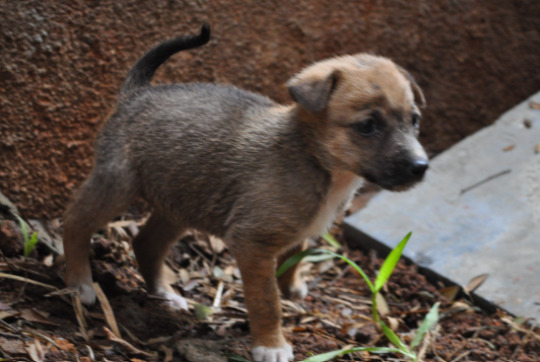
There are also other types of animals are pretty common to see alongside the roads.
Cattle are seen a lot (cows and bulls are easy to distinguish; cows (left) have udders and a small hump on their back, while bulls (right) are generally stockier and have a super-defined hump on their back). I'm pretty sure the specific cow breed is the sahiwal cow. They are either herded into paddocks for grazing or can be found wandering city streets on their own.

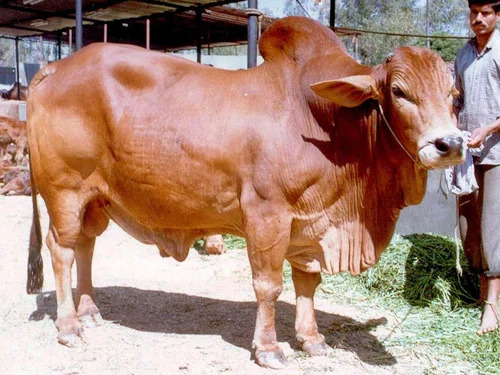
Goats are often herded by farmers into large masses of wool and horns and are guided to paddocks to graze. Sometimes, like cattle, they'll be found wandering city streets on their own.
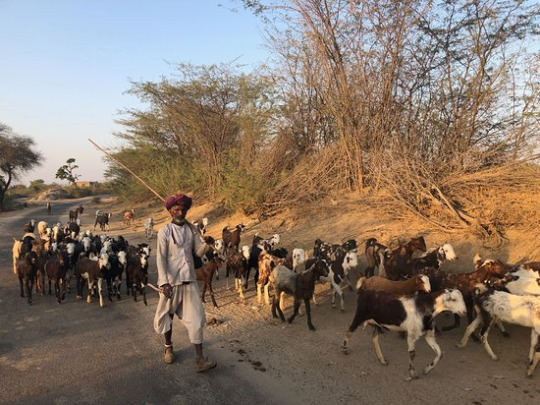
Chickens are usually kept close to stalls and homes. These chickens are not plump and fluffy like most Western chickens, but are quite skinny. Mottled feather colours are usually a result of mixed chicken breeds. In Tamil Nadu, the most common chicken breed is the asil chicken.
Various birds are often seen flying around traffic if they’re not disappearing into the sky, the most common being crows, pigeons and mynahs. (The chart below on the right is not an inexhaustive list of birds; you best search them up yourself.)
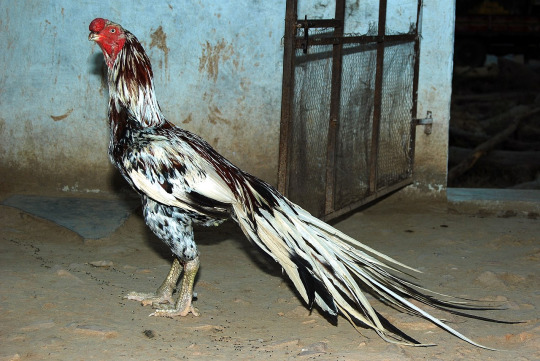
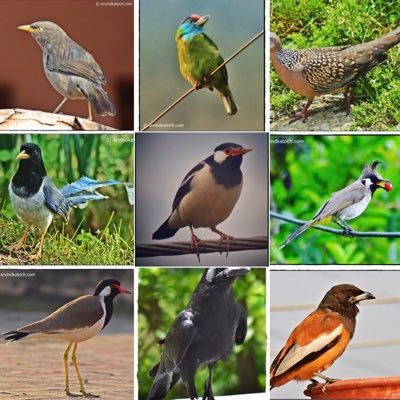
TRANSPORT
There is obviously a huge amount of trucks and lorries and buses. They all have beautiful designs or crazy LEDs or large detailed fluorescent / iridescent stickers that are impossible to ignore, whether it be at high noon or midnight.

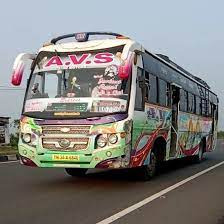
Expanding on that, the most common method of transport are motorcyclse or scooties, cars, and autos.
Also, as expected: traffic is insane. It’s horrible. It’s exhilarating. Western honking is akin to swearing, but here? Honk whenever you want. Honk if you’re happy or if you’re sad. You get a million dollars if you honk. You need to honk. It’s more important than breathing
Similarly, road rules don’t exist. Well, they do, and the Indian government does everything it can to make sure people do follow the rules, but based on the aforementioned honking, most people don't. Everyone just drives. Most bikers and motorcyclists don’t wear helmets. Only a few people wear seatbelts. Cars and motorcycles drive on the wrong side of the road and right into oncoming traffic. The chance of someone dying is 99% but it’s countered by desi stubbornness.
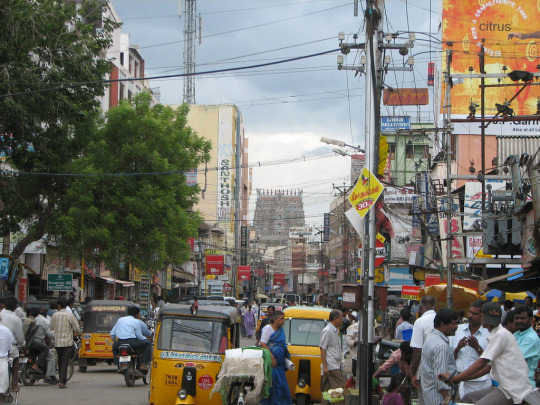
ENVIRONMENT & INFRASTRUCTURE
Houses and buildings are painted different colours!!! Pastel pinks and purples and deep teal hues, either plain colours or decorated with elaborate murals. This also applies to interiors. I reckon it was surprising to a lot of people when they were confronted with Mumbattan's vibrant colours, but honestly: coloured buildings slap, and it's based on the real thing. They are a sight to behold. Couple that with the architecture and oh boy- you've got such a beautiful environment.



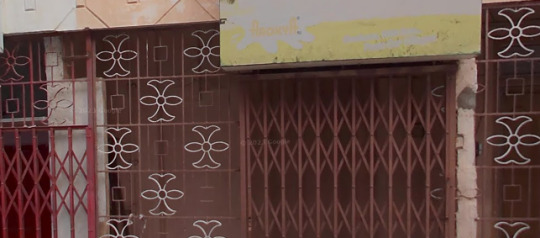
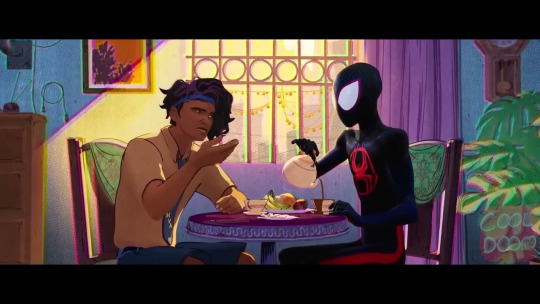
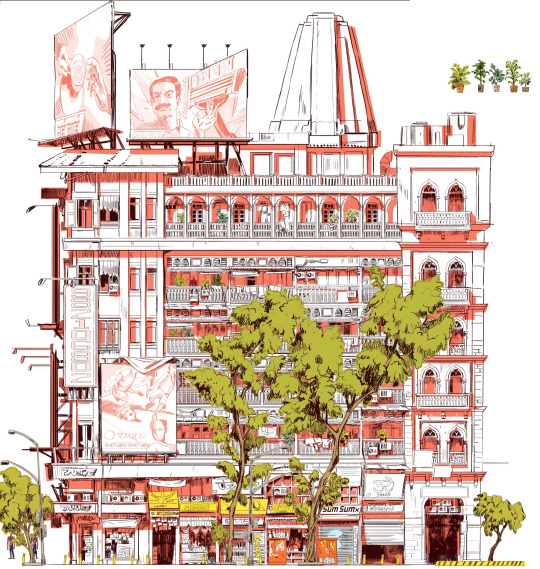
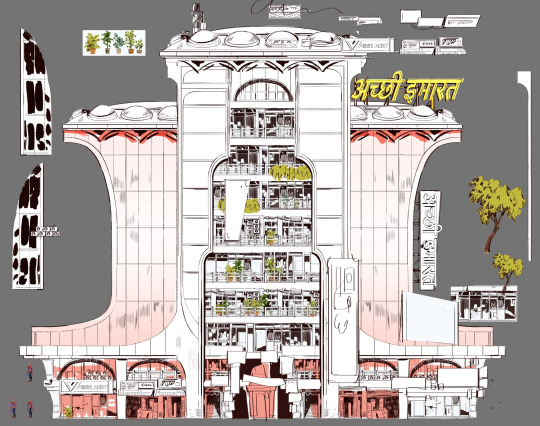
From @jettpack's concept art for Mumbattan buildings

jettpack's concept art of the Mumbattan collider
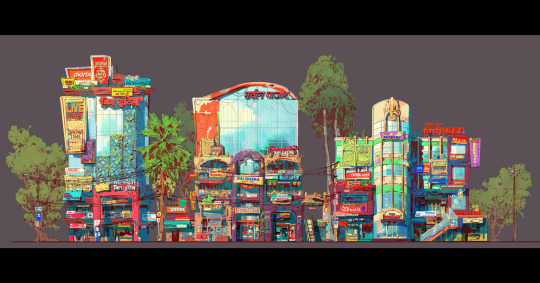
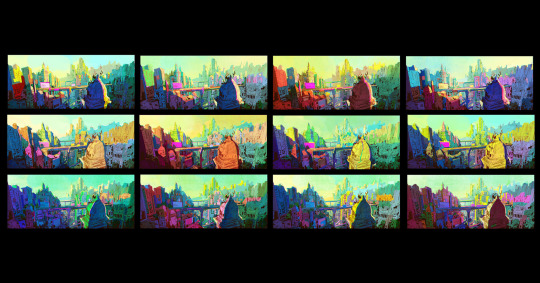
From @chenfelicia's concept and colour keys of Mumbattan
Don't be shy to really immerse in crazy descriptors - that's how you capture the liveliness of cities like Madurai and Mumbai and ultimately, their physical manifestations like Mumbattan.
Funny enough, movie posters and political banners and flyers are EVERYWHERE. They’re huge and take up entire billboards, or congregate along walls so it becomes practically a collage. It's impossible to ignore the image of "Makkal Selvan" Vijay Sethupathi about to beat some poor loser into a pulp with a stick, or the political parties roasting each other on paper with impressive photoshopped graphics.
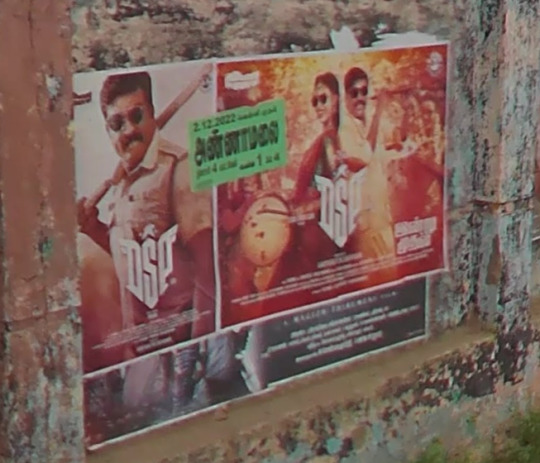
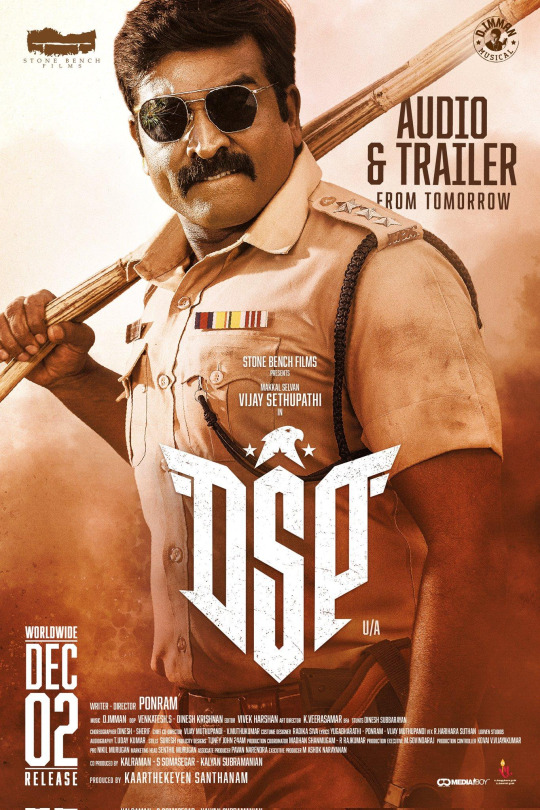
To tie in to the point about transport: there are hundreds of coffee stalls and snack shops and one-of-a-kind food stands. You can’t go 200 metres without running into one, either on the highway or in the city. I remember having jaggery coffee on my first night in India, and guys- it tasted so fucking good. I only wish I can transfer the taste to you. Absolutely splendid.
The climate in India is generally very humid and warm, but that doesn't mean we don't get cooler days; it is obviously cooler on winter nights. Also I've heard from many conflicting sources on India's seasonal weather (probably due to India's geograpghy), so you will have to talk to someone who is from India to really confirm. I've somewhat boiled it down to five seasons:
Summer - May-Jun; very hot (35-45ºC/95-113ºF), characterised by shrinking water bodies and droughts if there aren't any rainfalls; this time is good for plant growth/harvest if you've successfully managed water supplies
Monsoon - Jul-Aug; (34ºC/93ºF) very variable in terms of timing, characterised by torrential rains and floodings; the raining itself probably lodges somewhere in Jun-Sept but the aftereffects are felt long after the rains have stopped
Autumn - Sept-Nov; cooler but humid (25-35ºC/77-95ºF), and generally much drier since it transitions from autumn to winter
Winter - Dec-Feb; much colder, but the extent is dependent on geographic regions (20-25ºC/68-77ºF)
Spring - Mar-Apr; humid (33ºC/91ºF), sudden downpours, only occasionally do you get pleasant weather in this time
PEOPLE AND CULTURE
For some reason, there are still loud speakers blaring out music across the roads and as far as a few city blocks. I honestly thought that that had died out by the time my parents had graduated university, but it still seems like people like hearing music played at 120 decibels.
This is a complicated issue but people are not piss poor. Yes, India is a developing country, and yes there are slums and there are homeless and there are those who are stuck in a horrific sociocultural cycle, but people are rapidly getting into high-paying jobs at much higher rates than before. Overall, India is getting better; do us a favour and not have us be represented by the same poor struggle-riddled Indian stories that Hollywood and Western media is are fond of portraying.
@neptune432: One thing I think it's important to acknowledge though is how your experience in India changes depending on your caste. I feel like most of the indian voices talking online are savarna (I'm not an exception) so this doesn't get brought up as much. It's a complicated issue and one that I don't think non-indians (or savarna indians) should worry about tackling in their work, but it's worth saying because what's assumed to be everyday aspects of indian culture are actually specific to things like caste, class, and what region you're in. ex: in kerala, there are also examples of people eating on banana leaf with lots of vegan food for special occasions (namely during onam). but veganism is heavily tied to brahmanism so most of these people will be savarna. even if they eat meat otherwise, the specific interest in eating vegan for special occassions has clear implications. Though many people of different castes eat meat, it's a practice that gets discriminated against, being treated as barbaric and unclean. this is because of brahmanism and is usually only strictly followed by brahmins. dalits/bahujan usually face the worse treatment for their eating traditions. there's also the fact that hinduism is more of a recent term and a broad umbrella where many different gods and cultures have been put under (and usually done forcefully). a lot of local dieties and specific cultural practices come from outside the vedic traditions of aryans (upper caste north india), but now are treated almost as one thing. ex: kali is a south indian (dravidian) goddess who's still heavily worshipped there and who later got adapted to brahminical traditions. that's also why south indian practices of worship are different from the north and are discriminated against ex: north indians getting angry at the idea of worshipping kali by drinking alcohol and smoking even though it's an older tradition than theirs. these traditions are often connected to dalit/tribal cultures as well, which adds to why these traditions are attacked. Now, I don't feel comfortable with non-indians writing about india in general but I feel it's important to mention these things cos most people don't even realize they're only getting shown certain perspectives. How many people don't even know they're a north/south divide, for example? People are fed narrow viewpoints on India and assume that's everything to know. it's a problem cos that's what the brahminical forces in india want. This is all very general info too and I'm no expert so it's worth more research (like reading what dalits have said on their experiences). I'm not trying to criticize you btw, I just wanted to add some things cos this has been on my mind for a long time now. Couldn't have said it better myself, neptune!! (I barely mentioned it at all lmao) The caste system despite it being "abolished" still defines many traditions within India, and almost always in harmful ways. Like @summer-blues-stuff and I have mentioned in their post A culture post for the girlie pops under the Religion and caste section, it's best to leave the caste and social hierarchy alone even if you've done your research. That doesn't mean you shouldn't talk about it, it's just that people, especially those of non-South Asian decent, have to be extremely careful about it. Introductory resources on the caste system can be found on ABC, Pew Research and The Conversation.
Furthermore, the automatic assumption is that people living in shacks or remote villages have no access to greater populations and resources, which I'm happy to completely disprove. Guys: majority of the people living in my village, a rather remote village, have phones on them. Ranges from iPhones to Androids to good ol' Nokias.
(And, side note: as an Indian, I get amazingly pissed off when people's ringtones are set to maximum volume and play the same famous part of a famous song every time they get a call. Like shut the fuck up. At least quieten down? Please??)
(Also this might be a South Indian thing but Man some people are so entitled. Dudes you do not need to rub your ego into my face. Dudes you can, you know, keep all the cool things you think will get other people jealous out of the public eye. At this point I'm not jealous of what you Have, I'm pissed off at the Audacity To Think You Can Make Me Feel Bad About Myself With The Things That You Have).
Alright. Moving on.
Tiny temples and shrines are everywhere, dedicated to broad-Hinduism deities like Ganesh, Shakthi, or Vishnu; other times, they are shrines built for local deities that protect a particular village. For example, my village dedicated a little plot of water-logged land to a benevolent spirit called Subbamma, where people would leave offerings or place their sick/injured animals at the water's edge so that Subbamma could heal them. These tiny temples are almost always super colourful and amazingly detailed despite their small size
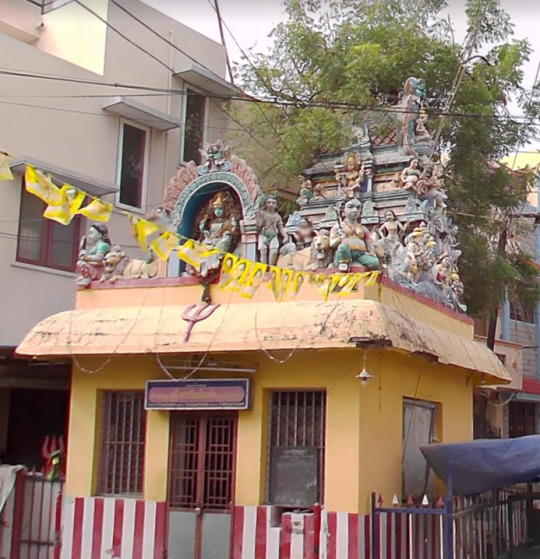
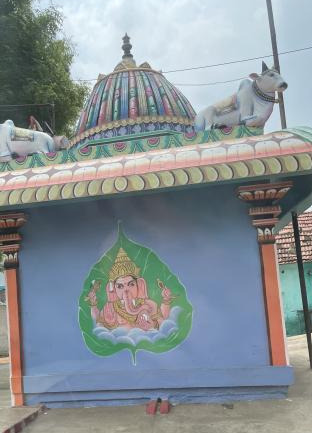
It could be a whole month before a celebration like Diwali but it’s the perfect time to set off hundreds of fireworks and firecrackers. People are just inconsiderate in many ways, it seems.
Some women wear strings of jasmine flowers in their hair. This might be completely regional-based, but most if not all women, ranging from little kids to old ladies, will wear these strings of jasmine in their hair. It's supposed to represent good fortune and beauty, and it smells wonderful.
@esrev-redips: #i usually only visit the north side of india (went to banglore and or chennai once) but im pretty sure most women in mumbai wouldnt wear #flowers in their hair unless they were of an older generation #they dont in new delhi at least and i t h i n k you can compare them but im not sure since i dont live in india either Thank you esrev!!!!! glad to see an old hunch be confirmed!!!

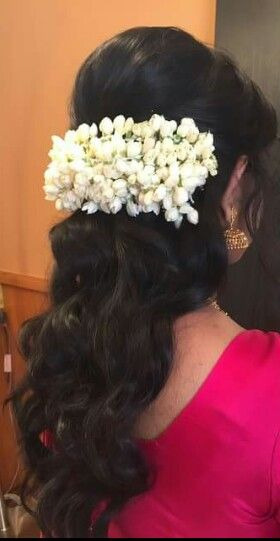
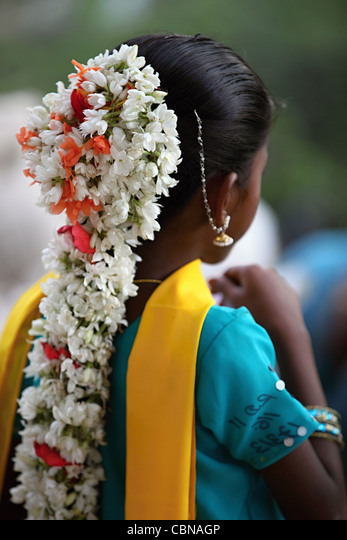
Normally you can wear any type of jasmine, but the common subtypes in Tamil Nadu are ஜாதிமல்லி (jathimalli; "Spanish jasmine"; left) and மல்லிப்பூ (mallipoo; right).
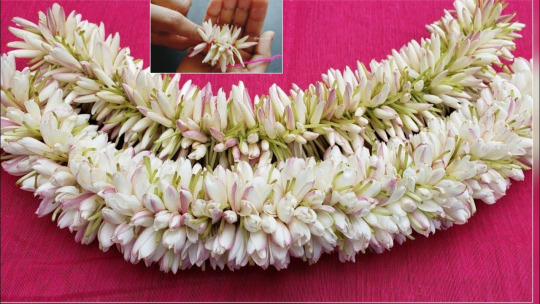
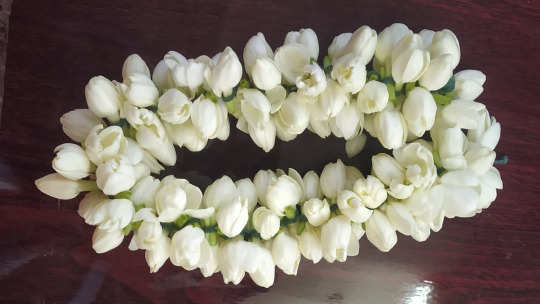
Eating food from a plate made from a banana leaf is more than just an aesthetic, and is often reserved for certain occasions; other times we eat from metal or ceramic plates. I can't vouch for other areas of India but I've been told the reason why banana leaves are predominantly used for large gatherings is because they can signal to diners if the food is rotten or has been poisoned; supposedly the leaf itself starts rotting and releases liquid, but I personally have never seen this happen. But of course, there are also other reasons as to why banana leaves are used (all of which are valid) ranging from being an eco-friendly disposable plate, offloading nutrients into food, or even to make the food taste better. Pick whichever reason you like.
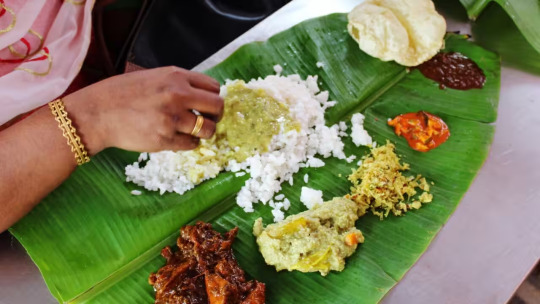
I'm literally so hungry looking at this. (Realises this is a Pavitr thing to say.) Anyway.
FOOD RECS!!!!!!
Reblog with your favourite foods >:) The list will be routinely updated...
JAGGERY COFFEE (from me) - GOOD FUCKING STUFF. ACTUALLY. if you see it.. GET IT IMMEDIATELY
PANI PURI (from @esrev-redips) - #also you forgot to mention the PANI PURI STANDS AHHHHHH YUMYUMYUM | RRRR YOU'RE SO RIGHT. PANI PURI FOR LIFE ACTUALLY.
JASUBEN PIZZA (from @the-witch-forever-lives) - okay this is specific to Ahmedabad | okay but as specific as it may be that sounds and looks delicious??? hello??????
DABELI (from @the-witch-forever-lives) - this too???? also it LOOKS wonderful i need it right now actually
VADA PAV (from @the-witch-forever-lives) - Also Vada pav from Mumbai is so one of a kind | you are absolutely correct. vada pav is truly something magnificent
I think that's about all I can give you right now. This took me a while to type out. Feel free to ask any questions, or if you have anything you would like to add on, like anything I might have glossed over or your favourite desi foods, please do!!! I'll be sure to reblog your addition and update the original post.
The point is that this post can become one of those few other reference posts that artists and writers and other creatives can use if they ever want to make anything related to India, because it's genuinely so cool to see your culture represented so well in popular modern media.
(And in fanfic and fandom. Especially in fanfic and fandom. you have no idea how many times I've gone insane reading a Pavitr-centric fic or reading comments on Pavitr-related posts and it's just outdated ideas and harmful stereotypes and all sorts of sick bullshit, and it's always to the point where I physically have to go outside and bite into a fresh rhizome in order to ground myself. Like damn, people, you need to know things before you start creating)
So uh, I hope this was helpful if not interesting! Happy early Diwali everyone! Knowledge-over-ignorance and all that; hopefully this post does that notion justice!
#pavitr prabhakar#wrote this solely because i wanted more atsv pavitr-centric fics and i need to get that specific immersed-in-india itch scratched#and also because the india i remembered decades ago is definitely not the india i visited last week#wow time flies doesn't it#spider man india#india#writing tips#o wise writer stuff#indian culture#south asian culture#spider man across the spider verse#atsv#across the spider verse#chaipunk#goldenpunk#cultural references#atsv pavitr#agnirambles
222 notes
·
View notes
Note
Hi! You mentioned in a prev oneshot that you were Indian, as a fellow south asian it is so nice to have someone into the fandom as well !!! May I have a request if batboys with an south asian so who does Indian classical dance like bharatnatyam or odissi please?
Heyyy I have never professionally learned classical Indian dances but I love watching them so ill try my best. Im sorry if its offensive, Im doing fem reader cuz gn wasn't requested..hope that okay too
Batboys x Dancer!Y/N
Dick grayson
He loved the story the dances depicted. He learned all the meanings and history behind all the hand movements and music.
Dick had probably been to India for a mission so he does know a little about indian history but now he has a much stronger motivation to learn everything and anything about that culture .
Also we all know dick has a thing for strong powerful women. And Bharatnatyam or Odssi or any indian classical dance for that matter REQUIRES SO MUCH STRENGTH . The facial expressions, the precise movement and the beauty of it all..he is whipped.
'He also loves when you get in touch with your culture. Dick is like a culture connoisseur and having a beautiful south asian girlfriend who is proud and expressive of her heritage makes him so proud.
He for sure has videos on videos which he show or boast about to anyone- even at galas , his favorite thing to talk about you and he is just so proud.
Jason Todd
I dont think todd will take the time to look into the difference meanings or stories these dances depict.
I have mentioned how much he stares and now he has a new found excuse to stress. Its like those movie montages of the wife through the husbands eyes where there is like a light glow behind her and he is just laughing (and then she dies or something)- idk if you know what I'm talking about but that exact thing happens with him.
you are like his salvation , so beautiful, golden poised and graceful. Its like a beggar seeing a goddess , a murderer on the steps of church or a ray of sunshine in the cold cold dark city - it becomes his way to spirituality.
He doesn't talk that much about it. the whole experience feels too surreal for him and he loves to see that side of you. when your practicing and don't have the routine perfected, he loves seeing the side of you no one else would get to see.
Tim drake-
This boy probably went to the ballet as a kid and I mean western rich parents-gotham city- I don't think he knows anything about indian classical dance so when he sees it for the first time he is shocked
He Is so intrigued , It just makes you so much cooler. He will love dropping in the middle of his patrols to watch you train and bring you snacks
He also loves doing your makeup for you , and the whole outfit....it looks super complicated and he is good with assembling stuff so he'll be really into it.
He would tbh encourage you to use your skill to start and internet channel and use that to promote movements. Also if you are into the idea of teaching immigrant kids on how to dance, he'll help find the means because being connected to your roots are just so important.
Rather than boring ass ballet in galas , he will promote other styles of dance especially indian classical.
Will cheer like a madman after your performances , even if they are at rich gotham galas. "WOHOO THATS MY GIRL THATS REAL ART YOU SEE THAT YOU RICH PRICKS"
Yea just because you have this super serious super cool skill doesn't mean you both wont be sitting in a dinner eating greasy food in the whole costume+makeup after performances. Youre still teenage dirtbags after all
Damian wayne-
he will draw you . loves sitting and sketching you dance .
He too is really into strong women and appreciates the beauty and precise art of indian dance.
Itll remind him of his home, like up in the mountains. Maybe dance is taught as a way of developing balance and precision. So to him you look like a strong fighter.
It just brings nostalgia and you look so ethereal while you dance. I think out of all batboys he would be most appreciative of the art
these are comparatively shorter but i didnt have too many thoughts. hope its okay tho
#Tim Drake + Red Robin#•#Tim Drake x Reader#Tim Drake x You#Tim Drake x Y/N#Tim Drake Fluff#Tim Drake Angst#Tim Drake Comfort#Tim Drake Headcanons#Tim Drake Imagines#Red Robin x Reader#Red Robin x You#Red Robin x Y/N#Batfamily#Batfamily x Reader#Batfamily Fluff#Batfamily x You#Batfamily x Y/N#Batfamily Headcanons#Batfamily Imagines#Batboys#Batboys x Reader#Batboys Fluff#Batboys Headcanons#Batboys Imagines#Jason Todd + Red Hood#Jason Todd x Reader#Jason Todd x You#Jason Todd x Y/N#Jason Todd Fluff
73 notes
·
View notes
Note
I, a very white and somewhat privileged person, am absolutely terrified to draw colored people. Because I don’t know if I’d cross the thin line of tasteful and authentic or racist and stereotypical…
Lol for starters don't refer to us as coloured people. This ain't 1955. Secondly my best advice to you is to use references of actual people of color. I would highly recommend staying away from those white men art station youtuber type artists for tutorials because they get a majority of their techniques and style from main stream video games and comic books, which to put it nicely don't have the best reputation for representing women and poc. tangent over, so yeah references. real life photographs of brown and black people.
pinterest is a site that a lot of current, especially younger artists like to use, but in all honesty it's not a very good source for someone trying to learn the fundamentals. it'll mainly show you 20 something year old ig and twitter models which is okay if you wanna just draw pretty people; but not the best if you wanna like I said learn fundamentals + have a portfolio that's varied. also it's rife with ai shit and stolen art, so yeah would only recommend that as an initial starting point/using it to make your own personal board for your saved images.
stock photo sites are my go to for refs. getty images, istock, alamy, etc. a simple right click save image or screenshot will work to get the images you want for free. of course there will be the watermarks, but they're honestly a very small issue to bypass. as long as they're not opaque and nearly covering the entire subject; you're good. a nice thing about stock photo sites is they usually give you the option to filter the image search results. say for instance you want to draw an elderly asian woman cooking or a young black man painting a picture or an indigenous child playing with dolls. you can look up certain terms you want in the search bar & specify gender, age and ethnicity to narrow down your search to what you want.
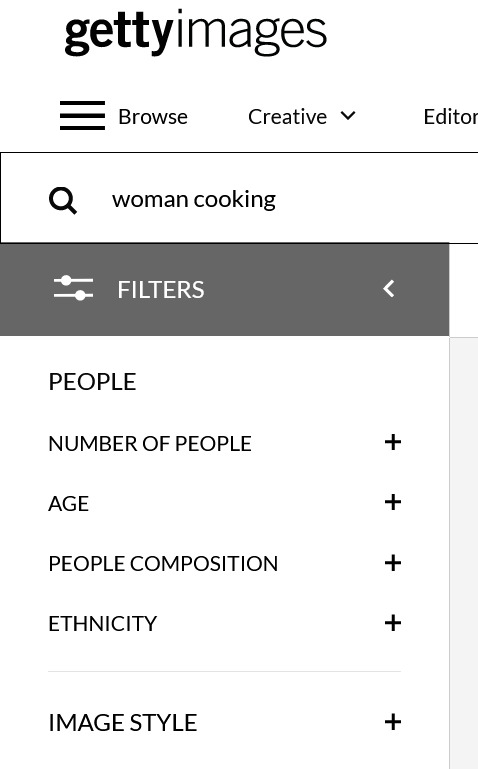
another awesome place for references i discovered during college is posespace.com

like with getty images, it gives you the option to filter your searches. they also have their models in clothed or nude shoots in the event that you want to practice some bare bones anatomy.
also also, get your info from artists of color. there's a decent amount of tutorials ive found over the years on here and youtube on coloring skintones, drawing certain hair types, how to avoid caricatures and stereotyping, different facial features, cultural hairstyles. the list goes on. don't be afraid to depict people outside of your race. literally just go about drawing us the same way you would a white person. don't be scared, as long as you remain respectful and make an honest effort to learn; you'll do fine.
resource links by and from artists of color:
'how i draw south + southeast asian people'
an example of what to avoid when stylizing east asian characters
'drawing asian people, source: i'm asian'
'lessons from drawing I: what is asian anyways?'
'how to draw indians'
'how to draw arabs'
'How I draw skin Part 2: DON”T DRAW NATIVE PEOPLE WITH RED SKIN!!!! A tutorial' (the link to the first part of this tutorial is broken sorry)
How to Draw Native People: a Tutorial/Reference Guide
How to Draw Black People by peachdeluxe
tips for drawing black people by rosheruu
drawing east asian faces by chuwenjie
how to draw black people series by Artistik Freedom (youtube)
✏️How I draw black hairstyles (simple) 🌱 by Likelihood Art (youtube)
there's also a bunch of black and brown artists on twitter and tiktok, so checking those sites for tutorials would be a good additional resource
good luck on your illustrating melanin endeavors 👍🏾
#anonymous ask hour#sorry for the late reply it took a while to compile all these links#art resources#long post
99 notes
·
View notes